 Search by Keyword
|
"WHILE MY GUITAR GENTLY WEEPS"
(George Harrison)
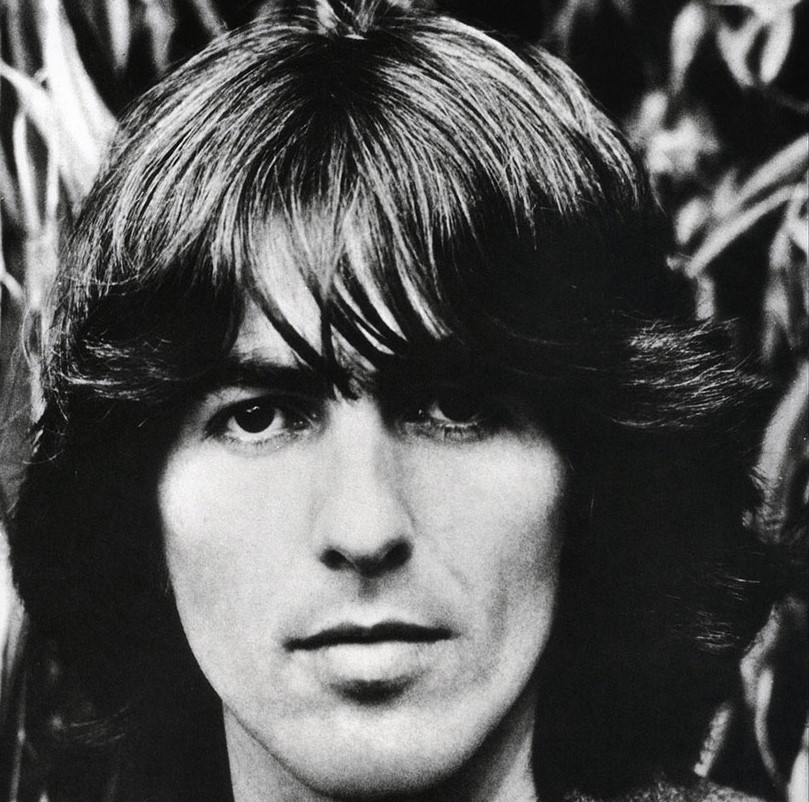 When The Beatles' "White Album" was first released in November of 1968, any George Harrison compositions that would be included were destined to be considered by most as secondary in stature among the offerings of Lennon and McCartney. George's compositions through 1966 were held in minimal regard by producer George Martin and the rest of the band in the recording studio, thereby receiving less attention than they so rightfully deserved. Harrison's songwriting output for 1967 and early 1968 consisted of five songs, only three of which were released at that point, these having their emphasis mostly on Indian instrumentation. Sadly, it was probably this period that John Lennon had in mind when he said: "There was an embarrassing period where his songs were not that good and nobody wanted to say anything, but we all worked on them." When The Beatles' "White Album" was first released in November of 1968, any George Harrison compositions that would be included were destined to be considered by most as secondary in stature among the offerings of Lennon and McCartney. George's compositions through 1966 were held in minimal regard by producer George Martin and the rest of the band in the recording studio, thereby receiving less attention than they so rightfully deserved. Harrison's songwriting output for 1967 and early 1968 consisted of five songs, only three of which were released at that point, these having their emphasis mostly on Indian instrumentation. Sadly, it was probably this period that John Lennon had in mind when he said: "There was an embarrassing period where his songs were not that good and nobody wanted to say anything, but we all worked on them."
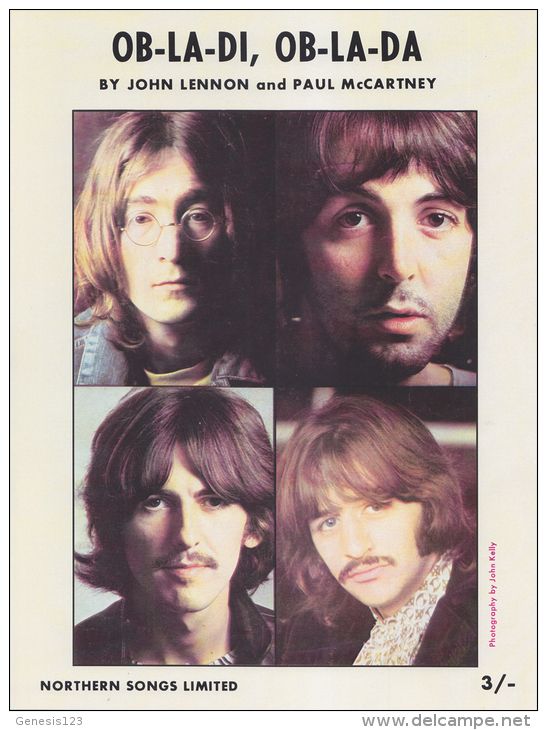 This all changed for the final year-and-a-half of The Beatles' career, although no one really expected it. In the first few months after the “White Album” was released, most attention seemed to be given to Paul's “Ob-La-Di, Ob-La-Da” as the stand out track of the new LP. In fact, when the needle landed on George's composition “While My Guitar Gently Weeps” three songs afterward, most probably thought of it as yet another impressive Lennon / McCartney offering (as did my young ears). However, after some years went by, the public at large began to gain appreciation for this unexpected gem from George, no doubt helped along by its appearance as the b-side to the “Ob-La-Di, Ob-La-Da” single in many countries. By 1973, it gained enough notoriety to be one of only three “White Album” tracks that appeared on their official compilation album “The Beatles/1967-1970” (aka, the “Blue Album”). This all changed for the final year-and-a-half of The Beatles' career, although no one really expected it. In the first few months after the “White Album” was released, most attention seemed to be given to Paul's “Ob-La-Di, Ob-La-Da” as the stand out track of the new LP. In fact, when the needle landed on George's composition “While My Guitar Gently Weeps” three songs afterward, most probably thought of it as yet another impressive Lennon / McCartney offering (as did my young ears). However, after some years went by, the public at large began to gain appreciation for this unexpected gem from George, no doubt helped along by its appearance as the b-side to the “Ob-La-Di, Ob-La-Da” single in many countries. By 1973, it gained enough notoriety to be one of only three “White Album” tracks that appeared on their official compilation album “The Beatles/1967-1970” (aka, the “Blue Album”).
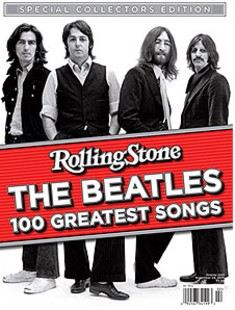 As the decades have passed, praise for the song has grown to almost legendary status. Rolling Stone Magazine's “The Beatles 100 Greatest Songs” special edition listed “While My Guitar Gently Weeps” as #10. Mick Jagger stated: “It's lovely, plaintive. Only a guitar player could write that. I love that song.” David Quantick, in his 2002 book titled “Revolution, The Making Of The Beatles' White Album” stated: “Harrison had never sounded so confident on record before, nor had he attemped such a powerful and emotive song. In creating 'While My Guitar Gently Weeps,' George also inadvertently invented '70s rock.” Testimony to the truth of this last statement is the fact that the song became an absolute mainstay on all classic rock radio stations. As the decades have passed, praise for the song has grown to almost legendary status. Rolling Stone Magazine's “The Beatles 100 Greatest Songs” special edition listed “While My Guitar Gently Weeps” as #10. Mick Jagger stated: “It's lovely, plaintive. Only a guitar player could write that. I love that song.” David Quantick, in his 2002 book titled “Revolution, The Making Of The Beatles' White Album” stated: “Harrison had never sounded so confident on record before, nor had he attemped such a powerful and emotive song. In creating 'While My Guitar Gently Weeps,' George also inadvertently invented '70s rock.” Testimony to the truth of this last statement is the fact that the song became an absolute mainstay on all classic rock radio stations.
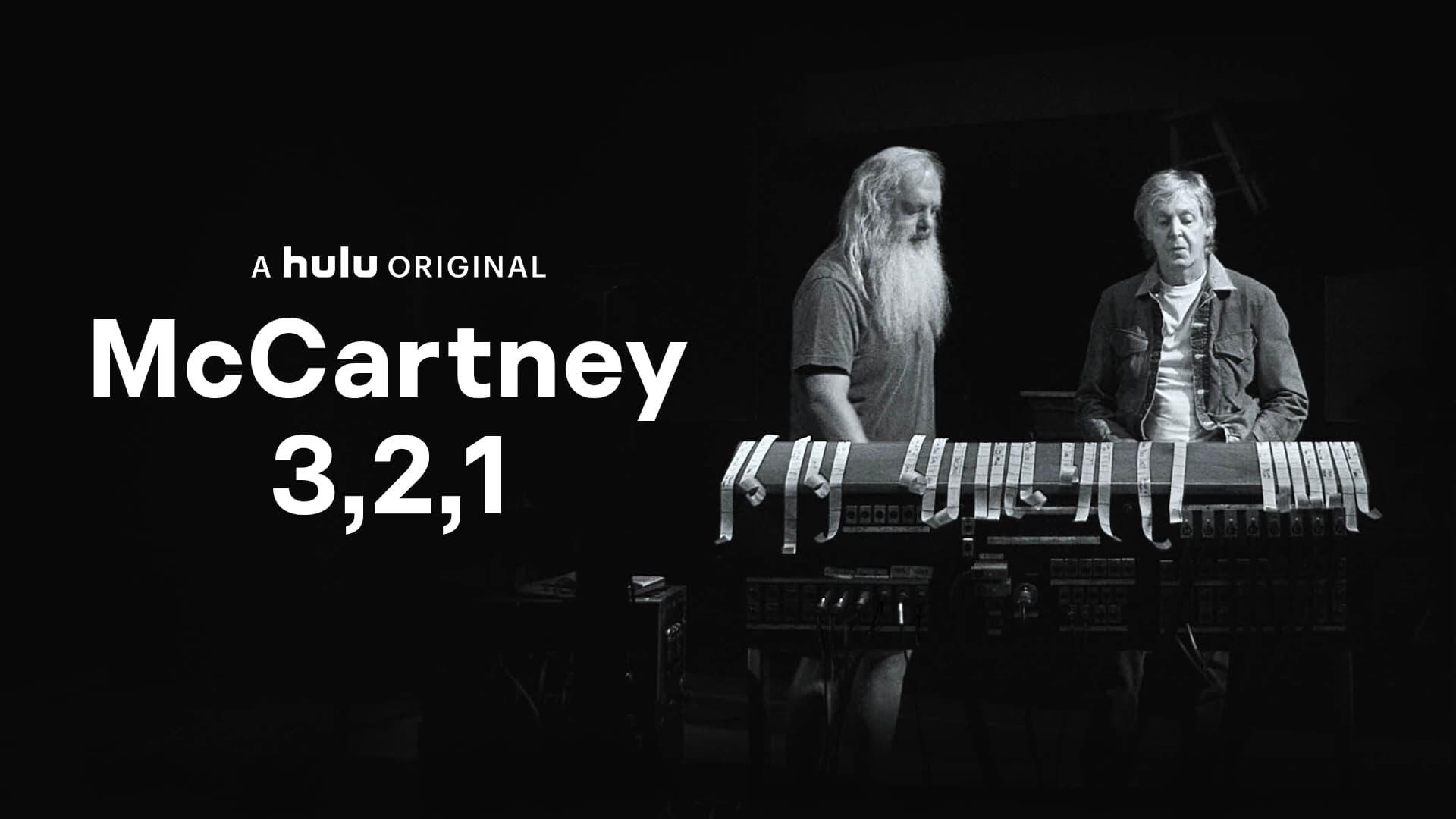 In Paul's 2021 Hulu series "McCartney 3,2,1," he related his surprise about George's development as a songwriter, especially regarding "Whiile My Guitar Gently Weeps." "From the little guy I met on the bus, a little guy with that quiff in his hair, a little guitar player, he became a very wise man. When I use the word 'magical,' that's what I mean. That didn't have to happen. We could have had five years and then gone back to the facory...no groups were supposed to last more than five years...he became one of the greats!" In Paul's 2021 Hulu series "McCartney 3,2,1," he related his surprise about George's development as a songwriter, especially regarding "Whiile My Guitar Gently Weeps." "From the little guy I met on the bus, a little guy with that quiff in his hair, a little guitar player, he became a very wise man. When I use the word 'magical,' that's what I mean. That didn't have to happen. We could have had five years and then gone back to the facory...no groups were supposed to last more than five years...he became one of the greats!"
George himself humbly admitted: “I knew the song was pretty good.”

"Sevenoaks" home in Warrington, England, where George Harrison wrote the bulk of "While My Guitar Gently Weeps."
Songwriting History
As quoted in the book accompanying the "Super Deluxe" 50th Annivery edition of the "White Album," George himself has stated that the song was written "at my mother's home in Warrington in the north of England - the spiritual home of George Formby!" This bungalow, named "Sevenoaks," was located in the village of Appleton Thorn, Warrenton, and was purchased by George in 1965 for his parents to live in after his Beatles' fame took root, making living in Liverpool intolerable. He apparently visited them shortly after his return from India with The Beatles and, during this visit in April or May, 1968, he had written the majority of "While My Guitar Gently Weeps."
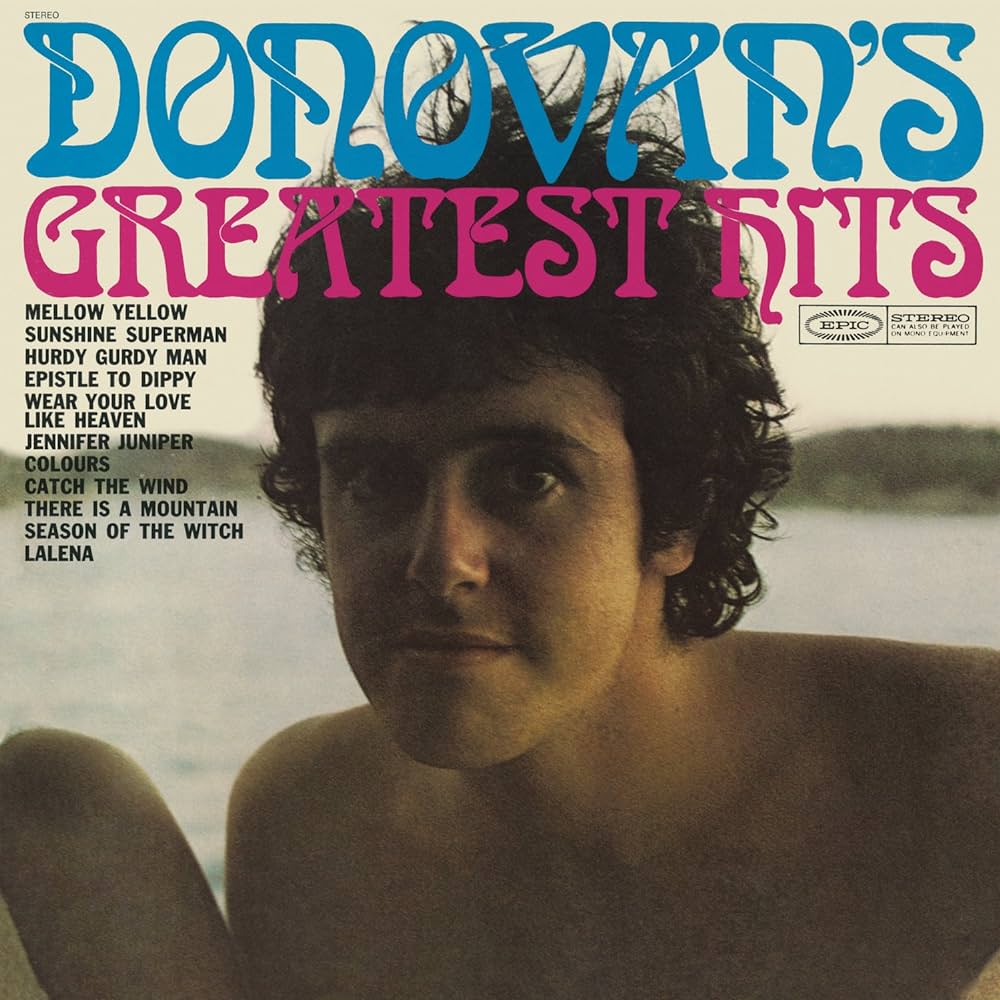 It is known that, while in India, fellow visitor Donovan taught John Lennon a particular finger-picking style of guitar playing that was then used in songs such as “Dear Prudence” and “Julia.” It appears that George picked up on this new style too, as periodically evidenced in an early attempt at recording an acoustic version of “While My Guitar Gently Weeps” in July of 1968. It is known that, while in India, fellow visitor Donovan taught John Lennon a particular finger-picking style of guitar playing that was then used in songs such as “Dear Prudence” and “Julia.” It appears that George picked up on this new style too, as periodically evidenced in an early attempt at recording an acoustic version of “While My Guitar Gently Weeps” in July of 1968.
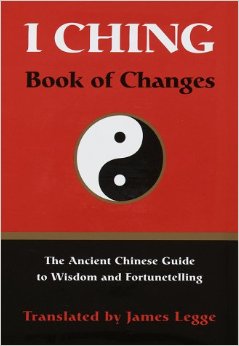 As to the lyrics of the song, George explains: "I had a copy of the 'I Ching – The Book Of Changes.' In the West we think of coincidence as being something that just happens - it just happens that I am sitting here and the wind is blowing my hair, and so on. But the Eastern concept is that whatever happens is all meant to be, and that there's no such thing as coincidence - every little item that's going down has a purpose....The idea was in my head when I visited my parents' home in the North of England. I decided to write a song based on the first thing I saw upon opening any book – as it would be relative to that moment, at that time. I picked up a book at random, opened it – saw 'gently weeps' – then laid the book down again and started the song. Some of the words to the song were changed before I finally recorded it." As quoted in the above mentioned "White Album" book, George elaborates: "'While My Guitar Gently Weeps' was just a simple study based on the theory that everything has some purpose for being there at that given moment...So I open this book and I saw 'gently weeps.' I shut the book and then I started the tune." As to the lyrics of the song, George explains: "I had a copy of the 'I Ching – The Book Of Changes.' In the West we think of coincidence as being something that just happens - it just happens that I am sitting here and the wind is blowing my hair, and so on. But the Eastern concept is that whatever happens is all meant to be, and that there's no such thing as coincidence - every little item that's going down has a purpose....The idea was in my head when I visited my parents' home in the North of England. I decided to write a song based on the first thing I saw upon opening any book – as it would be relative to that moment, at that time. I picked up a book at random, opened it – saw 'gently weeps' – then laid the book down again and started the song. Some of the words to the song were changed before I finally recorded it." As quoted in the above mentioned "White Album" book, George elaborates: "'While My Guitar Gently Weeps' was just a simple study based on the theory that everything has some purpose for being there at that given moment...So I open this book and I saw 'gently weeps.' I shut the book and then I started the tune."
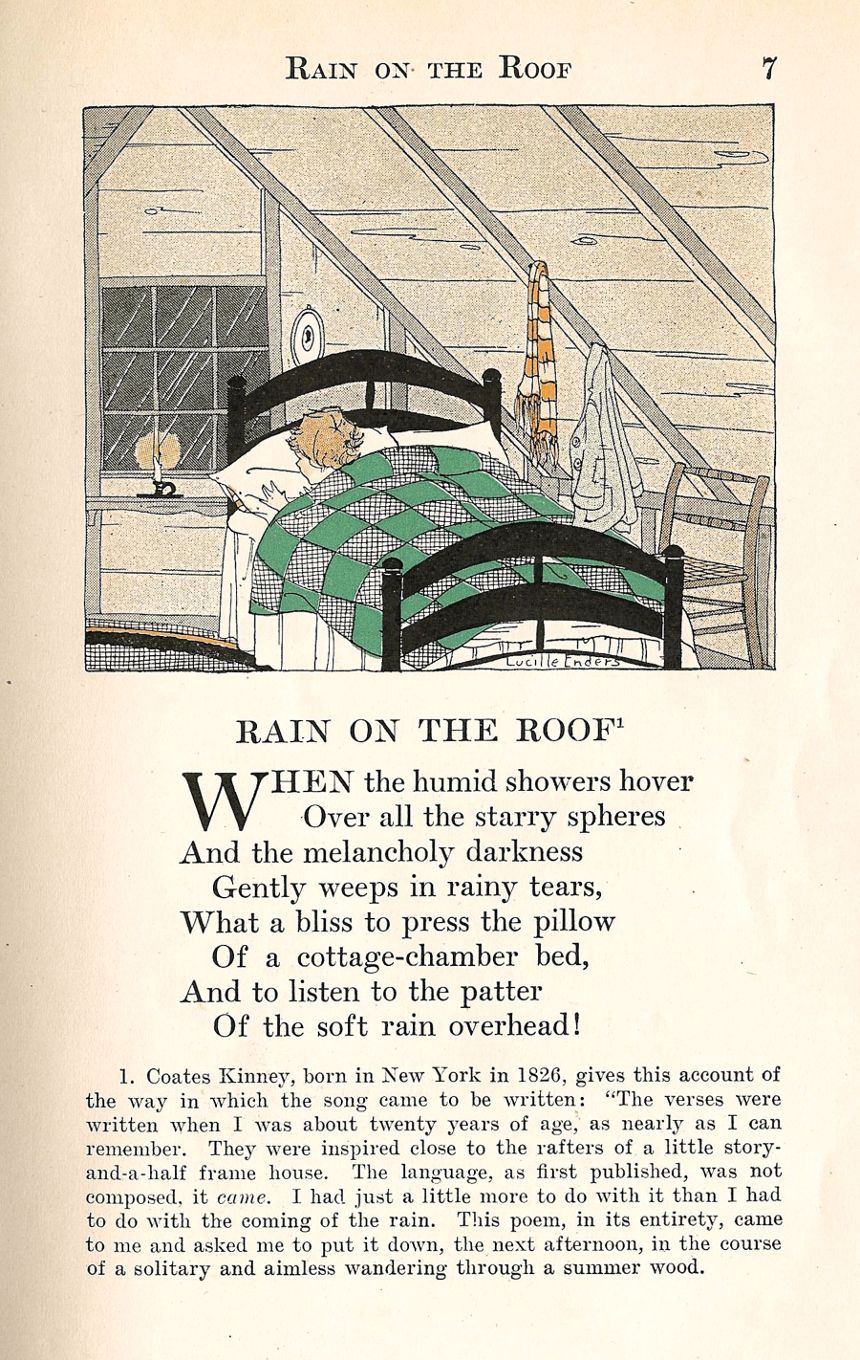 Concerning the book George randomly took off of the shelf on that day, the Rolling Stone Magazine “The Beatles 100 Greatest Songs” states: “Its source might have been Coates Kinney's much-anthologized 1849 poem 'Rain On The Roof,' which includes the lines 'And the melancholy darkness / Gently weeps in rainy tears.'” Concerning the book George randomly took off of the shelf on that day, the Rolling Stone Magazine “The Beatles 100 Greatest Songs” states: “Its source might have been Coates Kinney's much-anthologized 1849 poem 'Rain On The Roof,' which includes the lines 'And the melancholy darkness / Gently weeps in rainy tears.'”
The lyrics were pretty much in place as of May 28th, 1968, when George recorded his first demo of the song at his home in Esher, Surrey. However, it still went through some lyrical changes thereafter. At this point, the third line of the first verse was “Problems you sow are the troubles you're reaping,” which was dropped shortly afterwards. The final verse was also different, this being “I look at the trouble and hate that is raging...As I'm sitting here doing nothing but aging." George's original lyric sheet shows various other lyrical differences as well. It appears here that the title of the song could very well have been "Whilst My Guitar Gently Weeps," while he originally ended the first bridge with the words "I don't know how someone controlled you, how they blindfolded you." The second verse began with "I look at the sky and I notice it's clouding," while a later line in the verse was "I'm wondering why your cigars keep on burning." The final verse was originally conceived as "I look at the powers around everywhere...I think of the wars of the world that are raging."
 By June 25th, 1968, the acoustic version he recorded at EMI Studios changed the lyric in the first verse to what we've come to know in its released version, namely, “I look at the floor and I see it needs sweeping,” which stated the same sentiments with a less preachy tone. The first line of the final verse changed here as well, this becoming “I look from the wings at the play you are staging,” which also lightens the accusatory bent of his message somewhat. In an October 1969 BBC interview, George reiterated this metaphor: "All I'm doing is acting out the part of Beatle George and we're all acting out our parts. You know, the world is a stage and the people are the players. Shakespeare said that...and he's right." By June 25th, 1968, the acoustic version he recorded at EMI Studios changed the lyric in the first verse to what we've come to know in its released version, namely, “I look at the floor and I see it needs sweeping,” which stated the same sentiments with a less preachy tone. The first line of the final verse changed here as well, this becoming “I look from the wings at the play you are staging,” which also lightens the accusatory bent of his message somewhat. In an October 1969 BBC interview, George reiterated this metaphor: "All I'm doing is acting out the part of Beatle George and we're all acting out our parts. You know, the world is a stage and the people are the players. Shakespeare said that...and he's right."
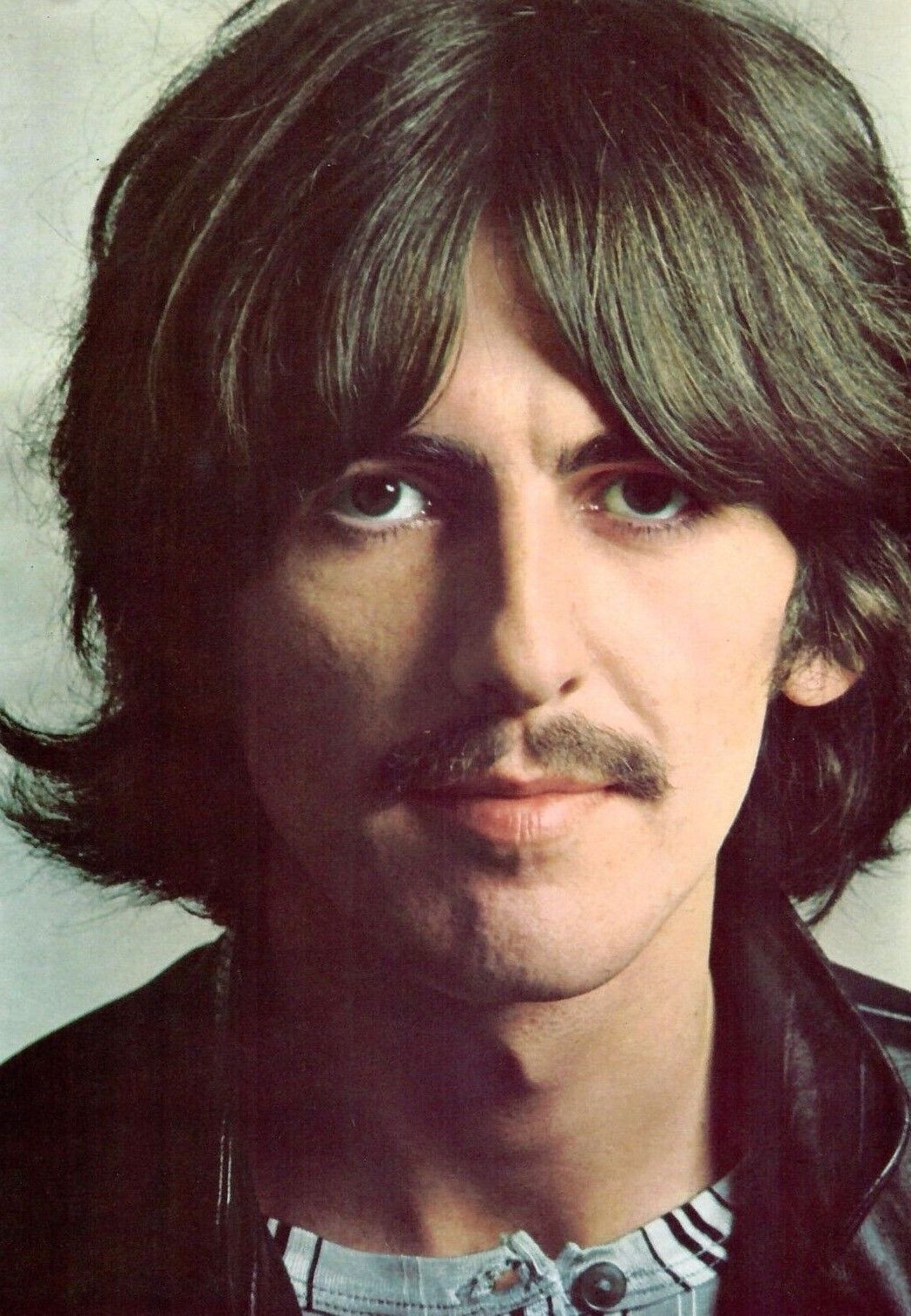 However, the lyrics were further refined during the recording session that produced the released version, his lead vocals being recorded on September 6th, 1968. At this point George decided to drop the final verse altogether, replacing it with a variation of a repeat of the first verse. This means that the writing of “While My Guitar Gently Weeps” stretches all the way from April or May (at his parent's house in Warrington) to September of 1968 (at EMI Studios). However, the lyrics were further refined during the recording session that produced the released version, his lead vocals being recorded on September 6th, 1968. At this point George decided to drop the final verse altogether, replacing it with a variation of a repeat of the first verse. This means that the writing of “While My Guitar Gently Weeps” stretches all the way from April or May (at his parent's house in Warrington) to September of 1968 (at EMI Studios).
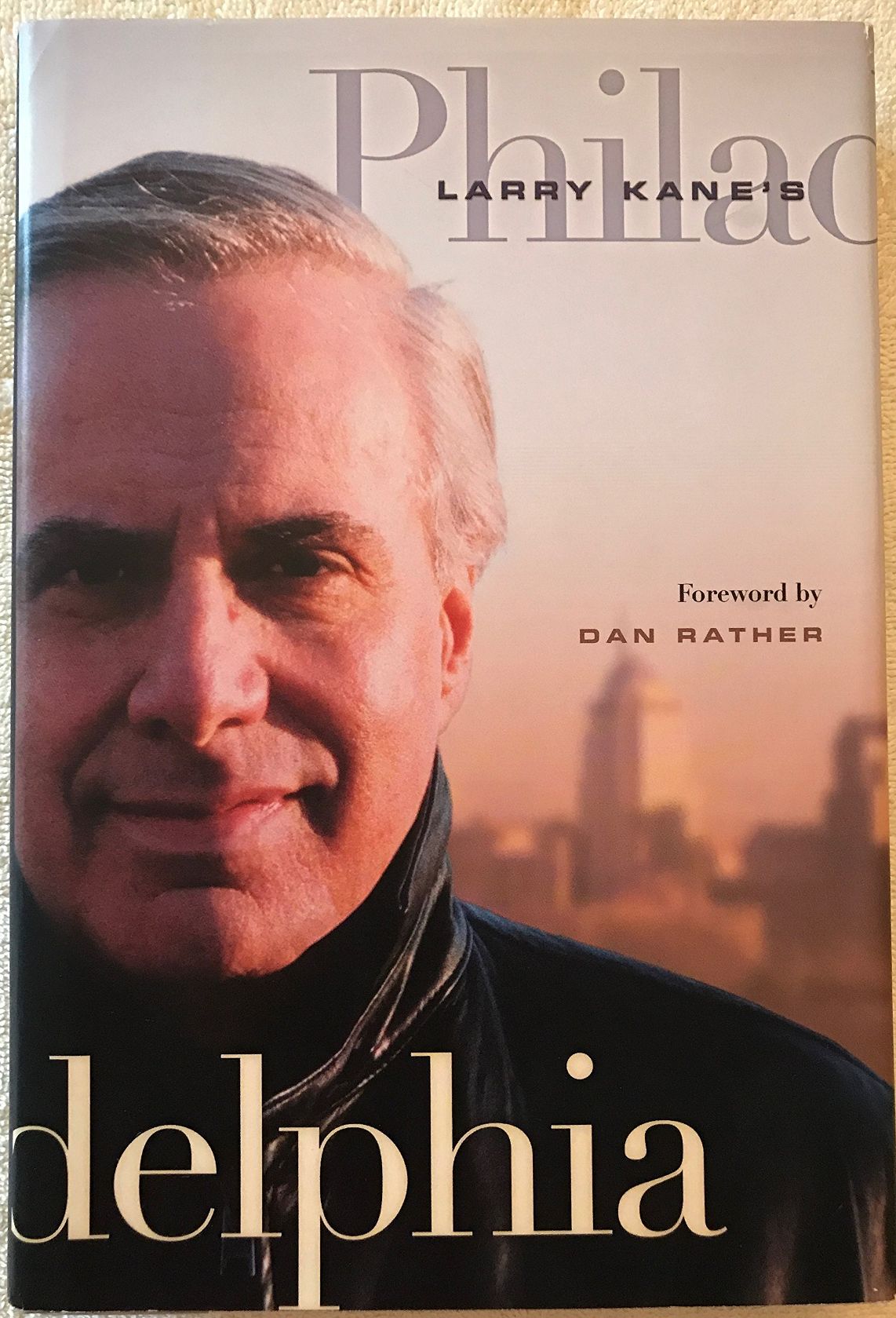 Not that this is unusual for George. During a 1965 interview with reporter Larry Kane, George spoke candidly about his songwriting technique. “My main problem is trying to write lyrics...I'll leave it for about five weeks, then I'll suddenly remember. Then I'll add a bit more to it, so it will probably take me about three months before I finish one song. I'm so lazy it's ridiculous.” Not that this is unusual for George. During a 1965 interview with reporter Larry Kane, George spoke candidly about his songwriting technique. “My main problem is trying to write lyrics...I'll leave it for about five weeks, then I'll suddenly remember. Then I'll add a bit more to it, so it will probably take me about three months before I finish one song. I'm so lazy it's ridiculous.”
All in all, it appears that the lyrics George was going for were expressing his disillusion at the state of world affairs in contrast to his recent assimilation of Eastern spiritual beliefs. While unconditional love is inherently inside each one of us, so he believed, when George viewed mankind, it was apparent to him that this love was “sleeping,” or dormant and left unexpressed. “Nobody told you how to unfold your love,” he states, revealing mankind's state of affairs as being “controlled” by others, “bought and sold” so to speak. The common man has become “diverted,” “perverted” and “inverted” as well, mankind not being “alerted” to our dire condition by anyone who was spiritually qualified to do so.
 The most telling line of the whole song, one that even the most casual of listeners could easily catch, was “With every mistake we must surely be learning.” With the political turmoil that was abundant at the time, this sarcastic but poignant lyric stands out as unmistakable testimony to the plight of mankind's existence. The most telling line of the whole song, one that even the most casual of listeners could easily catch, was “With every mistake we must surely be learning.” With the political turmoil that was abundant at the time, this sarcastic but poignant lyric stands out as unmistakable testimony to the plight of mankind's existence.
Recording History
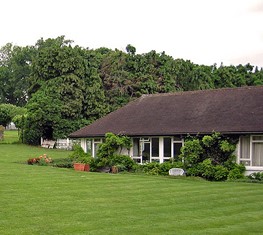 On May 28th, 1968, The Beatles met at George's "Kinfauns" house in Esher, Surry, as mentioned above, to record demos of songs they all had recently written in preparation for entering the studio to record their next album. After sitting back and allowing John to record a large body of his recently written songs, George finally got the opportunity to preview some of his, "While My Guitar Gently Weeps" being the first one of his recorded that day on the Ampex 4-track recording unit they were using. On May 28th, 1968, The Beatles met at George's "Kinfauns" house in Esher, Surry, as mentioned above, to record demos of songs they all had recently written in preparation for entering the studio to record their next album. After sitting back and allowing John to record a large body of his recently written songs, George finally got the opportunity to preview some of his, "While My Guitar Gently Weeps" being the first one of his recorded that day on the Ampex 4-track recording unit they were using.
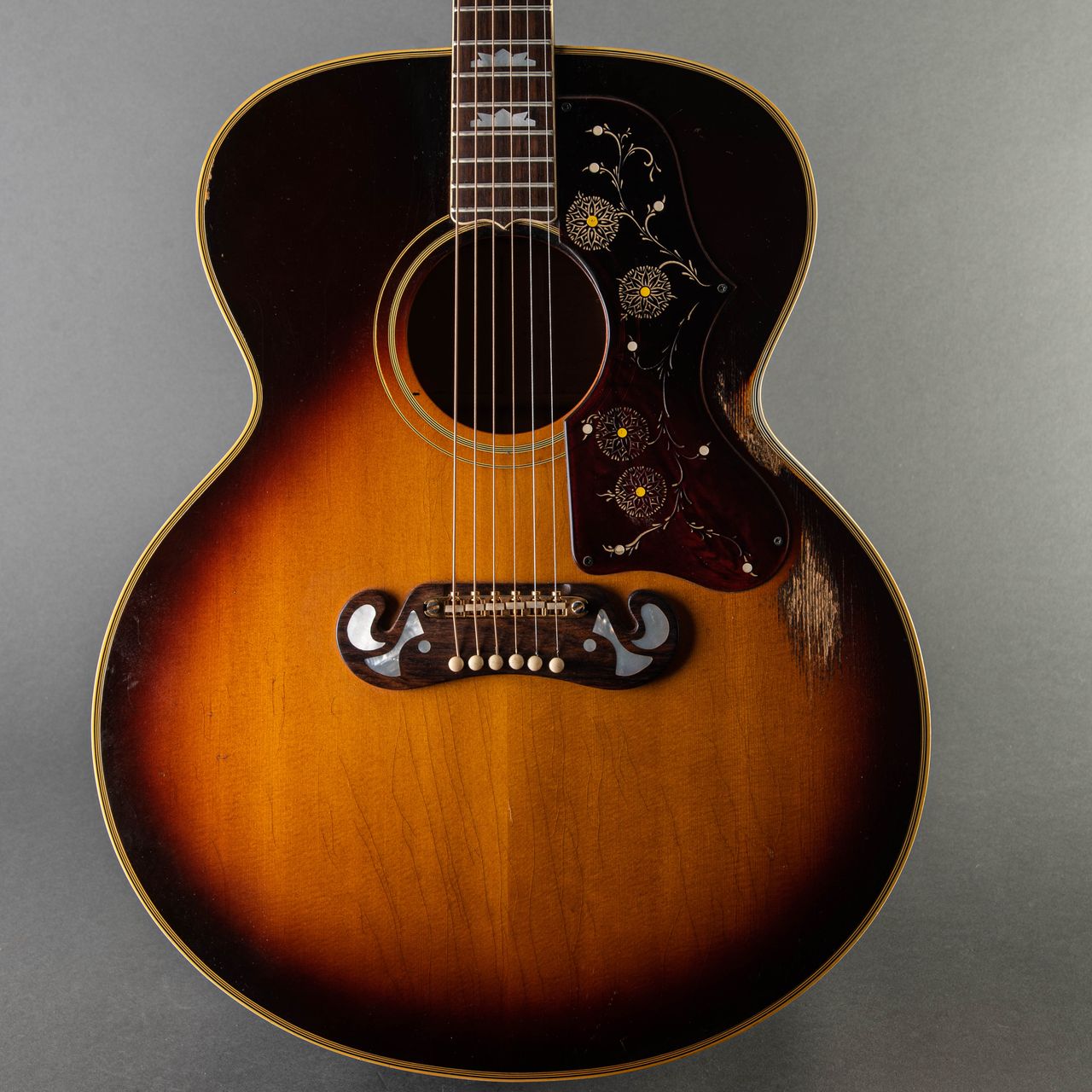 This demo version was only two-and-a-half minutes long and was played at a faster tempo than what became the finished product much later in the year. George double-tracked himself on acoustic guitar as well as vocals while someone, probably Paul, played an organ during both bridges and during the conclusion of the song, this conclusion differing quite a bit from the finished version. Despite the slight differences in the lyrics mentioned above, you can hear Paul exclaim “Cool!” after the conclusion of this demo as if to suggest he is quite impressed with George's new song. The version of this demo as contained on the 50th Anniversary editions of the "White Album" released in 2018 omits the tracks containing Paul's contributions. This demo version was only two-and-a-half minutes long and was played at a faster tempo than what became the finished product much later in the year. George double-tracked himself on acoustic guitar as well as vocals while someone, probably Paul, played an organ during both bridges and during the conclusion of the song, this conclusion differing quite a bit from the finished version. Despite the slight differences in the lyrics mentioned above, you can hear Paul exclaim “Cool!” after the conclusion of this demo as if to suggest he is quite impressed with George's new song. The version of this demo as contained on the 50th Anniversary editions of the "White Album" released in 2018 omits the tracks containing Paul's contributions.
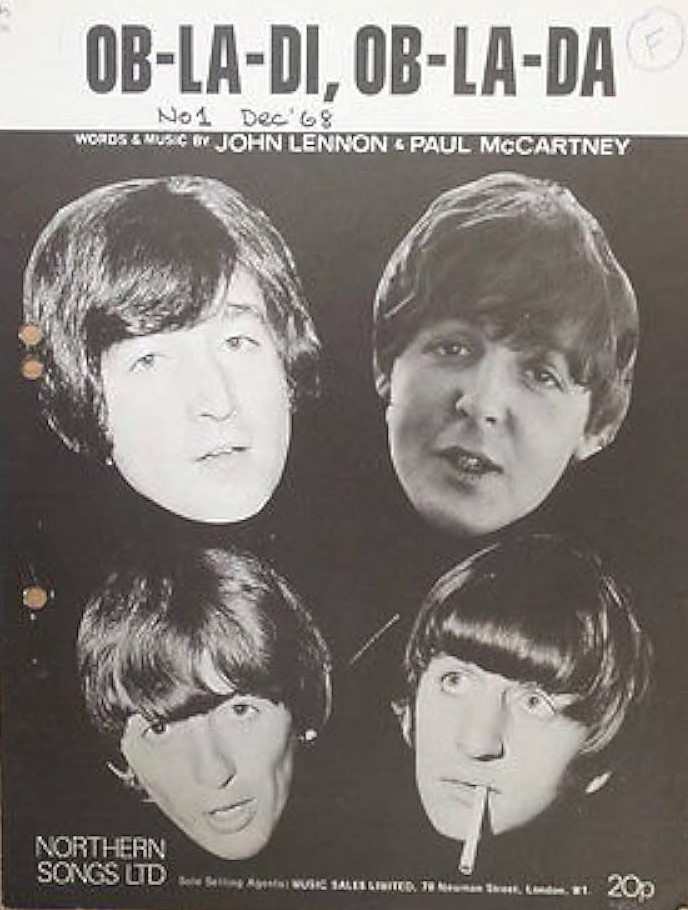 The Beatles entered EMI Studios on May 30th, 1968, to start recording what became the “White Album,” but it wasn't until July 25th, 1968, that George got the opportunity to start working on one of his songs. “I always had to do about ten of Paul and John's songs before they'd give me the break,” George has been quoted as saying. After his patiently cooperating through many of his cohorts songs, including the extensive working and reworking of “Ob-La-Di, Ob-La-Da,” George decided to premier “While My Guitar Gently Weeps” as the first of five songs he wanted to contribute to the album. (One of these, “Not Guilty,” while being fully recorded, was dropped at the last minute.) The Beatles entered EMI Studios on May 30th, 1968, to start recording what became the “White Album,” but it wasn't until July 25th, 1968, that George got the opportunity to start working on one of his songs. “I always had to do about ten of Paul and John's songs before they'd give me the break,” George has been quoted as saying. After his patiently cooperating through many of his cohorts songs, including the extensive working and reworking of “Ob-La-Di, Ob-La-Da,” George decided to premier “While My Guitar Gently Weeps” as the first of five songs he wanted to contribute to the album. (One of these, “Not Guilty,” while being fully recorded, was dropped at the last minute.)
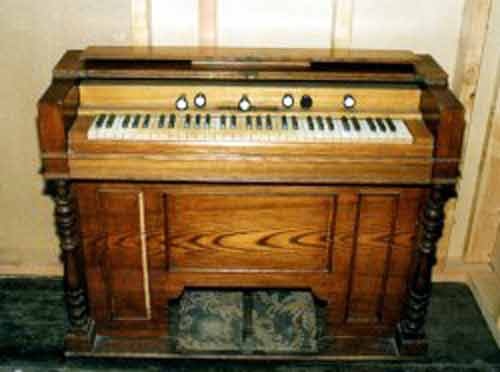 The group entered EMI Studio Two on July 25th, 1968 sometime after 7 pm to work on the song. It appears that George and Paul were the first to arrive on this day, which prompted them to lay down a couple attempts of the song acoustically, just George on acoustic guitar and vocals with Paul playing harmonium. "Take one" was a beautiful version performed primarily by George, Paul joining in on the final bridge and verse as he was getting acquainted with the chord changes and arrangement. At the end of this take, George calls up to the controm room "Let's hear that back!" Then, the tape began rolling again as they went through the song yet another time with Paul playing throughout the song, this unannounced second take not being discovered until 2018 in preperation for the 50th Anniversary releases of the "White Album." Midway through this second take, George stops and instructs the engineering staff, "Yeah, maybe you'll have to give him his own mike" before continuing the song through to completion with Paul fumbling somewhat at times on harmonium. The group entered EMI Studio Two on July 25th, 1968 sometime after 7 pm to work on the song. It appears that George and Paul were the first to arrive on this day, which prompted them to lay down a couple attempts of the song acoustically, just George on acoustic guitar and vocals with Paul playing harmonium. "Take one" was a beautiful version performed primarily by George, Paul joining in on the final bridge and verse as he was getting acquainted with the chord changes and arrangement. At the end of this take, George calls up to the controm room "Let's hear that back!" Then, the tape began rolling again as they went through the song yet another time with Paul playing throughout the song, this unannounced second take not being discovered until 2018 in preperation for the 50th Anniversary releases of the "White Album." Midway through this second take, George stops and instructs the engineering staff, "Yeah, maybe you'll have to give him his own mike" before continuing the song through to completion with Paul fumbling somewhat at times on harmonium.
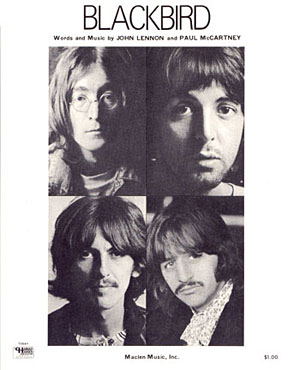 While most writers consider "take one" as recorded on this day as just another demo of the song, the professionalism displayed on this performance could easily indicate that this beautiful version may have been considered the 'keeper,' not unlike Paul's acoustic solo performance of “Blackbird” that was already in the can at this time, as well as John's song “Julia” which also ended up on the album in a similar acoustic state. This eventually was not the case with George's song, however, "take 1" not being released to the general public until 1996 on the “Anthology 3” compilation album. While most writers consider "take one" as recorded on this day as just another demo of the song, the professionalism displayed on this performance could easily indicate that this beautiful version may have been considered the 'keeper,' not unlike Paul's acoustic solo performance of “Blackbird” that was already in the can at this time, as well as John's song “Julia” which also ended up on the album in a similar acoustic state. This eventually was not the case with George's song, however, "take 1" not being released to the general public until 1996 on the “Anthology 3” compilation album.
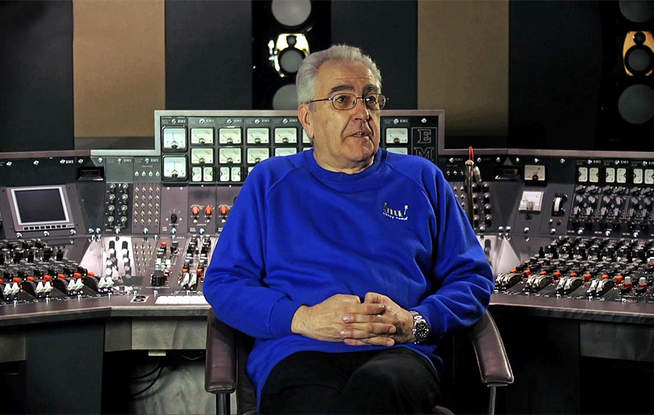 Hindsight leads many to believe that the song would have worked perfectly on the “White Album” in this state, but even back then many thought this was the case. Technical engineer Brian Gibson recalls: “The song changed considerably by the time they had finished with it. They completed the song on eight-track tape (at a later date) and this gave them the immediate temptation to put more and more stuff on. I personally think it was best left uncluttered.” Hindsight leads many to believe that the song would have worked perfectly on the “White Album” in this state, but even back then many thought this was the case. Technical engineer Brian Gibson recalls: “The song changed considerably by the time they had finished with it. They completed the song on eight-track tape (at a later date) and this gave them the immediate temptation to put more and more stuff on. I personally think it was best left uncluttered.”
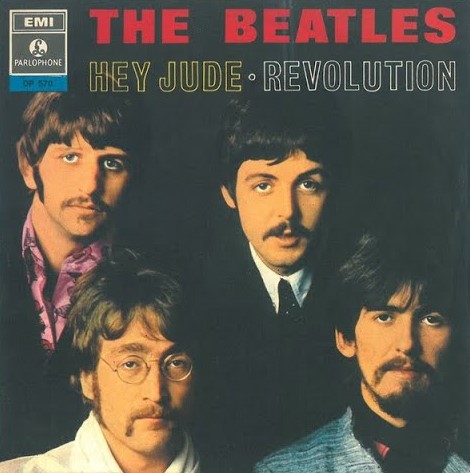 However, George must have thought the song needed a band arrangement on this day, so The Beatles rehearsed several takes of the song, all of which were committed to tape and taken away by George for him to listen to at home to help him decide what to do. This extended the session to 3:15 am the following morning. However, George must have thought the song needed a band arrangement on this day, so The Beatles rehearsed several takes of the song, all of which were committed to tape and taken away by George for him to listen to at home to help him decide what to do. This extended the session to 3:15 am the following morning.
Interestingly, George had to excercise even more patience before The Beatles would finally devote more time to “While My Guitar Gently Weeps.” The next song on the agenda was Paul's “Hey Jude,” which they continued to work on until the second week of August. George then decided to postpone work on “Gently Weeps,” opting to introduce another of his compositions, the ill-fated “Not Guilty,” on August 7th, 1968.
 A full three weeks after they first worked on “While My Guitar Gently Weeps,” the band turned their attention to it again on August 16th, 1968. They entered EMI Studio Two sometime after 7 pm to record a full band version of the song, George deciding during the past three weeks that the acoustic version he previously recorded wasn't what he had envisioned for the song after all. From this point on, that beautiful acoustic rendition was considered yet another demo recording of the song. A full three weeks after they first worked on “While My Guitar Gently Weeps,” the band turned their attention to it again on August 16th, 1968. They entered EMI Studio Two sometime after 7 pm to record a full band version of the song, George deciding during the past three weeks that the acoustic version he previously recorded wasn't what he had envisioned for the song after all. From this point on, that beautiful acoustic rendition was considered yet another demo recording of the song.
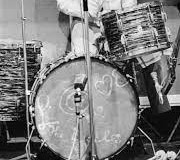 The group recorded fourteen takes of the instrumental rhythm track which featured Paul on bass (track one), George on guitar (track two), John on organ (track three) and Ringo on drums (track four). "I like the way it suddenly changes into a song," George exclaimed during these takes, which indicate that he was becoming pleased with the full band arrangement. "Take 14" was deemed the best and, since it filled up the four-track tape, required a remix to open up more tracks for future overdubs. They decided to combine the drums and bass onto track one of the new tape, while the organ and guitar were mixed together onto track two, George's guitar being treated with a process referred to as "flanging" in the process. This now became "take 15," the tape now slowed down to 42 ½ cycles per second to extend the song from 3:53 to 4:53. The group recorded fourteen takes of the instrumental rhythm track which featured Paul on bass (track one), George on guitar (track two), John on organ (track three) and Ringo on drums (track four). "I like the way it suddenly changes into a song," George exclaimed during these takes, which indicate that he was becoming pleased with the full band arrangement. "Take 14" was deemed the best and, since it filled up the four-track tape, required a remix to open up more tracks for future overdubs. They decided to combine the drums and bass onto track one of the new tape, while the organ and guitar were mixed together onto track two, George's guitar being treated with a process referred to as "flanging" in the process. This now became "take 15," the tape now slowed down to 42 ½ cycles per second to extend the song from 3:53 to 4:53.
 A note of interest is that while the recording sheet indicated the usual George Martin as producer of this session, one of the tape boxes were clearly marked: “The Beatles; Produced by The Beatles.” Technical engineer Brian Gibson recalled: “The 'White Album' was a time when George Martin was starting to relinquish control over the group. There were a number of occasions, such as holidays and when he had other recording commitments, when he just wasn't available for their sessions and they would just get on and produce it themselves. George Martin certainly wasn't around for quite a considerable period of time, although they would always fall back on him for scoring and arranging things.” In any event, the studio finally cleared out by 5 am the following morning, George Harrison flying out a little later that day to the Greek island of Corfu for a short break. A note of interest is that while the recording sheet indicated the usual George Martin as producer of this session, one of the tape boxes were clearly marked: “The Beatles; Produced by The Beatles.” Technical engineer Brian Gibson recalled: “The 'White Album' was a time when George Martin was starting to relinquish control over the group. There were a number of occasions, such as holidays and when he had other recording commitments, when he just wasn't available for their sessions and they would just get on and produce it themselves. George Martin certainly wasn't around for quite a considerable period of time, although they would always fall back on him for scoring and arranging things.” In any event, the studio finally cleared out by 5 am the following morning, George Harrison flying out a little later that day to the Greek island of Corfu for a short break.
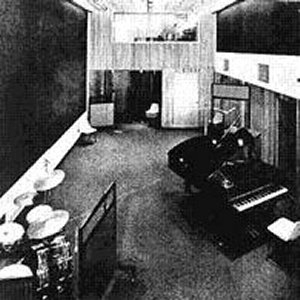 Another two-and-a-half weeks passed before they focused attention on the song again, September 3rd, 1968 being that day. Since the group had recently recorded John's song “Dear Prudence” at London's Trident Studios on eight-track recording equipment, something they didn't think EMI possessed, they wished they could record at their familiar EMI Studios with those same accommodations. But, low and behold, they found out that EMI did indeed have, not one, but two eight-track machines on the premises, although they weren't ready for use yet. These 3M models were held up in Francis Thompson's office and were being inspected and readied for eventual installation. Another two-and-a-half weeks passed before they focused attention on the song again, September 3rd, 1968 being that day. Since the group had recently recorded John's song “Dear Prudence” at London's Trident Studios on eight-track recording equipment, something they didn't think EMI possessed, they wished they could record at their familiar EMI Studios with those same accommodations. But, low and behold, they found out that EMI did indeed have, not one, but two eight-track machines on the premises, although they weren't ready for use yet. These 3M models were held up in Francis Thompson's office and were being inspected and readied for eventual installation.
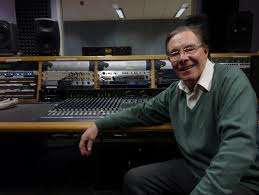 Technical engineer Dave Harries remembers: “The studios were never allowed to use any equipment until Francis (Thompson) had said that it was up to standard, which was great, fine, but when you've got four innovative lads from Liverpool who want to make better recordings, and they've got a smell of the machine, matters can take a different course. They must have been getting on to (engineer) Ken Scott about it because Ken (Townshend) called me and suggested we get (one of the machines) out of Francis (Thompson)'s office and take it along to (EMI Studio) number two...I very nearly got the sack over that." Engineer Ken Townshend adds: "The eight-track machines were not suitable at that stage for pop recordings. The Beatles had become reliant on the use of Automatic Double Tracking and phasing so before the 3M machines were pressed into service, extensive modifications - particularly to the head block - were designed and implemented by Francis Thompson at the studios.” Technical engineer Dave Harries remembers: “The studios were never allowed to use any equipment until Francis (Thompson) had said that it was up to standard, which was great, fine, but when you've got four innovative lads from Liverpool who want to make better recordings, and they've got a smell of the machine, matters can take a different course. They must have been getting on to (engineer) Ken Scott about it because Ken (Townshend) called me and suggested we get (one of the machines) out of Francis (Thompson)'s office and take it along to (EMI Studio) number two...I very nearly got the sack over that." Engineer Ken Townshend adds: "The eight-track machines were not suitable at that stage for pop recordings. The Beatles had become reliant on the use of Automatic Double Tracking and phasing so before the 3M machines were pressed into service, extensive modifications - particularly to the head block - were designed and implemented by Francis Thompson at the studios.”
Testimony for putting a new eight-track machine to use before it was really ready is given by engineer Mike Sheady. “Unless the tape operator remembered to mute the output from the machine when you spooled back and wanted to hear the tape traveling past the heads, it would send the spooling noise straight into the Beatles' (headphones), almost blasting their heads off. They got very uptight about that, understandably, because it can be very disconcerting.”
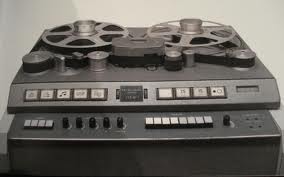 This session in EMI Studio Two got under way at the usual 7 pm, or thereabouts, the first line of business being to transfer the previous recording of “While My Guitar Gently Weeps” from the four-track machine to the newly installed eight-track machine. This meant that, with only tracks one and two being filled on the four-track tape of "take 15," there were now six open tracks for overdubbing, tracks three through eight. With Ringo still absent from the group (see “Back In The U.S.S.R.” for the details), George Harrison was the only Beatle working on the song on this day, possibly being the only member of the group present. In fact, George Martin wasn't even there, the producer's chair being empty for the day. This session in EMI Studio Two got under way at the usual 7 pm, or thereabouts, the first line of business being to transfer the previous recording of “While My Guitar Gently Weeps” from the four-track machine to the newly installed eight-track machine. This meant that, with only tracks one and two being filled on the four-track tape of "take 15," there were now six open tracks for overdubbing, tracks three through eight. With Ringo still absent from the group (see “Back In The U.S.S.R.” for the details), George Harrison was the only Beatle working on the song on this day, possibly being the only member of the group present. In fact, George Martin wasn't even there, the producer's chair being empty for the day.
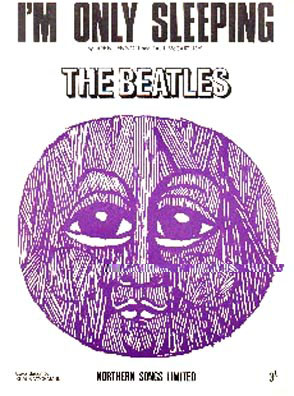 Onto this new eight-track tape, which was now called "take 16," George overdubbed his lead vocals for the song and then double-tracked them. Afterward, onto track five, he attempted a very concise guitar overdub, as explained by Brian Gibson. “George particularly wanted to get the sound of a crying guitar but he didn't want to use a wah-wah (tone) pedal, so he was experimenting with a backwards guitar solo. This meant a lot of time-consuming shuttling back and forth from the studio to the control room. We spent a long night trying to get it to work but in the end the whole thing was scrapped.” George, remembering the backward guitar effect that worked so well on their 1966 song “I'm Only Sleeping,” thought this would work well to spruce up “While My Guitar Gently Weeps.” After a tape copy of the rhythm track for the song “Revolution” was created for use in their promo film to be shot the following day, the session ended at 3:30 am. Onto this new eight-track tape, which was now called "take 16," George overdubbed his lead vocals for the song and then double-tracked them. Afterward, onto track five, he attempted a very concise guitar overdub, as explained by Brian Gibson. “George particularly wanted to get the sound of a crying guitar but he didn't want to use a wah-wah (tone) pedal, so he was experimenting with a backwards guitar solo. This meant a lot of time-consuming shuttling back and forth from the studio to the control room. We spent a long night trying to get it to work but in the end the whole thing was scrapped.” George, remembering the backward guitar effect that worked so well on their 1966 song “I'm Only Sleeping,” thought this would work well to spruce up “While My Guitar Gently Weeps.” After a tape copy of the rhythm track for the song “Revolution” was created for use in their promo film to be shot the following day, the session ended at 3:30 am.
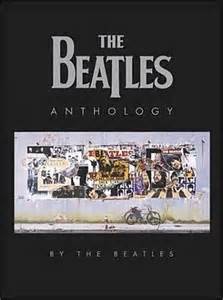 In the book “Beatles Anthology,” George Harrison describes the mood of these sessions as well as events that led to the following recording session. “We tried to record it, but Paul and John were so used to just cranking out their tunes that it was very difficult at times to get serious and record one of mine. It wasn't happening. They weren't taking it seriously...and so I went home that night thinking, 'Well, that's a shame,' because I knew the song was pretty good.” In the book “Beatles Anthology,” George Harrison describes the mood of these sessions as well as events that led to the following recording session. “We tried to record it, but Paul and John were so used to just cranking out their tunes that it was very difficult at times to get serious and record one of mine. It wasn't happening. They weren't taking it seriously...and so I went home that night thinking, 'Well, that's a shame,' because I knew the song was pretty good.”
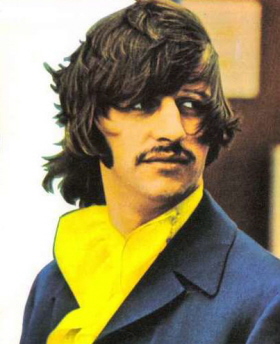 Their next recording session, the first with the returning Ringo, was in EMI Studio Two on September 5th, 1968. To welcome Ringo back into the fold, his drum kit as well as the studio itself was decked out with flowers. At 7 pm or so, the group worked at adding yet more overdubs to “Gently Weeps.” George added two separate lead vocals and a new lead guitar track, while Ringo added maracas and a new drum track, all of this taking up only six of the eight tracks on the tape. Their next recording session, the first with the returning Ringo, was in EMI Studio Two on September 5th, 1968. To welcome Ringo back into the fold, his drum kit as well as the studio itself was decked out with flowers. At 7 pm or so, the group worked at adding yet more overdubs to “Gently Weeps.” George added two separate lead vocals and a new lead guitar track, while Ringo added maracas and a new drum track, all of this taking up only six of the eight tracks on the tape.
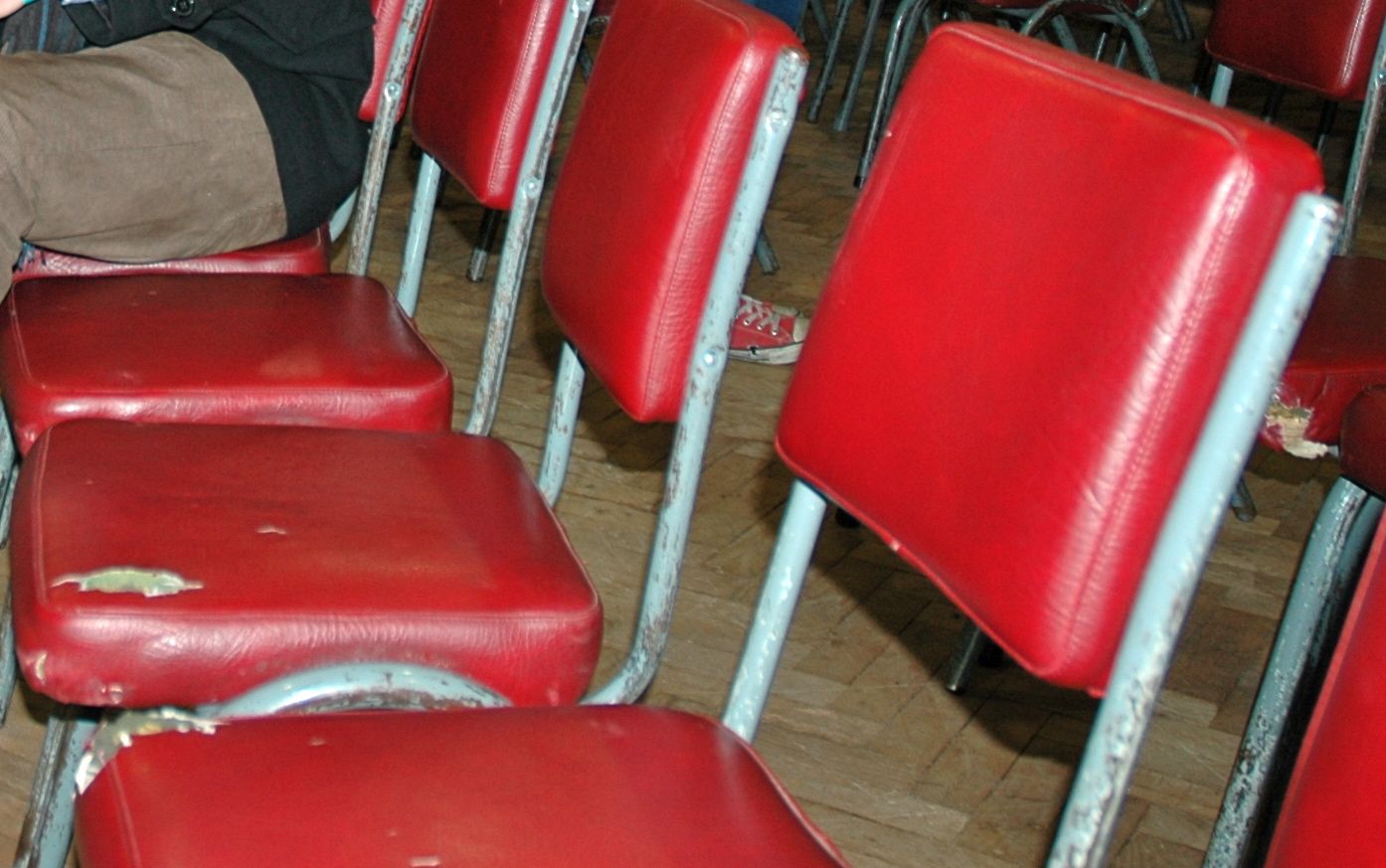 Because the band now had eight tracks at their disposal, instead of four, their tendency was to keep adding more overdubs than they needed, thereby overproducing the recording until it all sounded somewhat muddy. Technical engineer Brian Gibson described an occurrence with a particular Beatles song, which may very easily have been this track: “There was one song, I can't remember the title, in which they had added so many instruments that you just couldn't hear the drums any more. So they then overdubbed Ringo playing a chair, a red plastic Abbey Road chair, slapping the drum sticks on the cushion making a thwack to emphasize the snare beat, because they'd buried it” Because the band now had eight tracks at their disposal, instead of four, their tendency was to keep adding more overdubs than they needed, thereby overproducing the recording until it all sounded somewhat muddy. Technical engineer Brian Gibson described an occurrence with a particular Beatles song, which may very easily have been this track: “There was one song, I can't remember the title, in which they had added so many instruments that you just couldn't hear the drums any more. So they then overdubbed Ringo playing a chair, a red plastic Abbey Road chair, slapping the drum sticks on the cushion making a thwack to emphasize the snare beat, because they'd buried it”
 In any event, the song at this point is described by Mark Lewisohn in his book “The Beatles Recording Sessions” as “quite different from the released version, with less prominent Harrison vocals and the backwards guitar and organ parts to the fore.” George had listened to a playback of the song at this point and didn't like what he heard, deciding to scrap the whole thing and start fresh. I'm sure that most Beatles fans would love to hear this version one day, since it has never surfaced on any bootlegs or official releases. In any event, the song at this point is described by Mark Lewisohn in his book “The Beatles Recording Sessions” as “quite different from the released version, with less prominent Harrison vocals and the backwards guitar and organ parts to the fore.” George had listened to a playback of the song at this point and didn't like what he heard, deciding to scrap the whole thing and start fresh. I'm sure that most Beatles fans would love to hear this version one day, since it has never surfaced on any bootlegs or official releases.
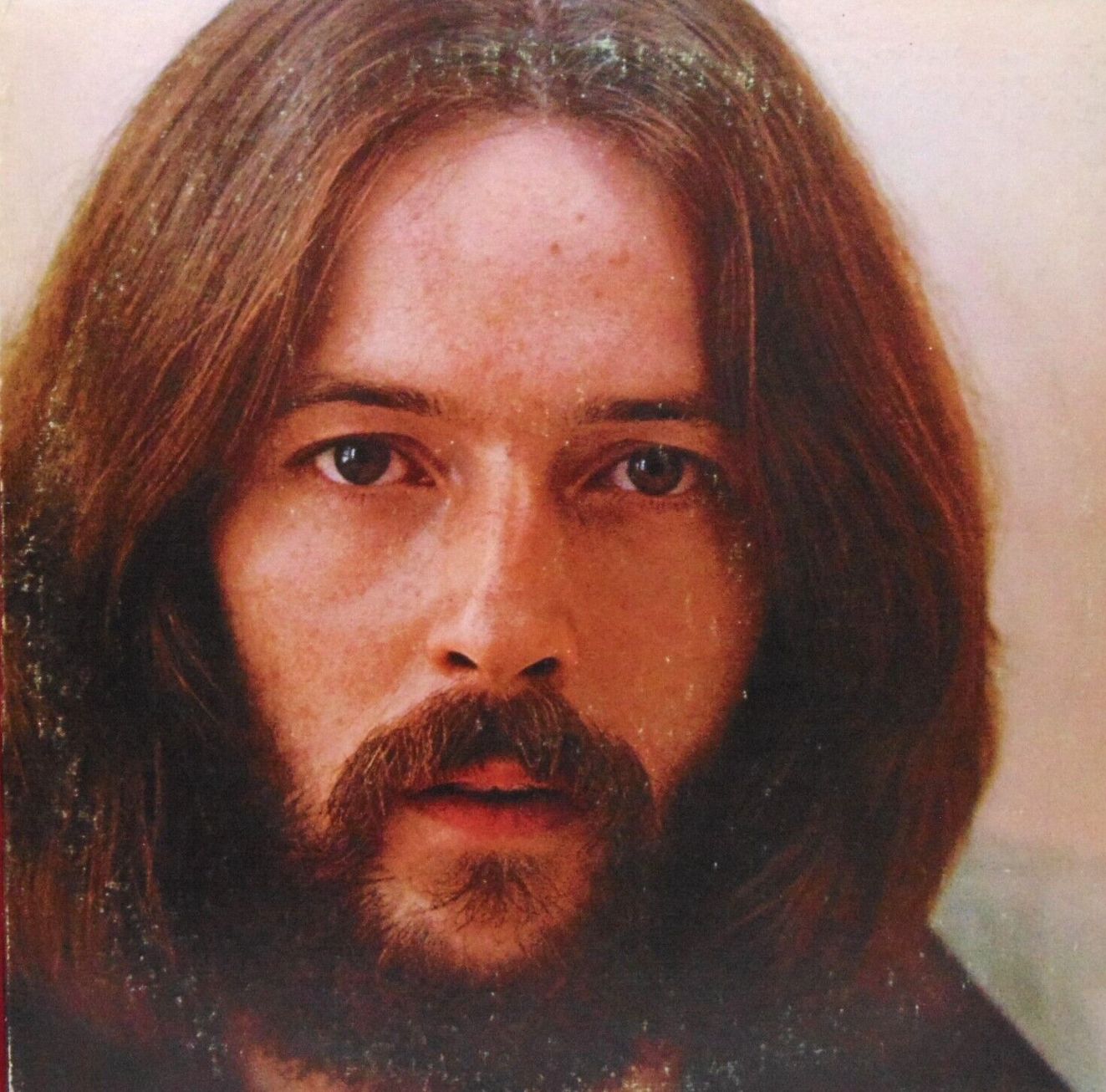 In an understandably frustrated mood, George took the group through 28 more takes of the song in his attempt to start from scratch. However, sometime during the recording of this re-remake of the song, a special guest entered the studio. George explains what transpired on his trip to the studio on that day. “I was driving into London with Eric Clapton, and I said, 'What are you doing today? Why don't you come to the studio and play on this song for me?' He said, 'Oh, no – I can't do that. Nobody's ever played on a Beatles' record and the others wouldn't like it.' I said, 'Look, it's my song and I'd like you to play on it.'” In an understandably frustrated mood, George took the group through 28 more takes of the song in his attempt to start from scratch. However, sometime during the recording of this re-remake of the song, a special guest entered the studio. George explains what transpired on his trip to the studio on that day. “I was driving into London with Eric Clapton, and I said, 'What are you doing today? Why don't you come to the studio and play on this song for me?' He said, 'Oh, no – I can't do that. Nobody's ever played on a Beatles' record and the others wouldn't like it.' I said, 'Look, it's my song and I'd like you to play on it.'”
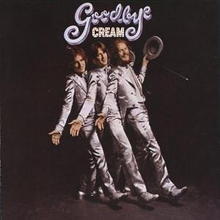 Eric Clapton, who had just recently announced his decision to dissolve his band Cream and was gearing up for a farewell tour in the Autumn of that year was, in fact, giving George a lift to EMI Studios in London from Surrey, where they both lived. They had known each other since the days when Eric played with The Yardbirds and had shared the bill with The Beatles during their series of Christmas shows in late 1964 and early 1965. Eric apparently dropped George off and reluctantly agreed to arrive sometime later to lend a hand in recording George's song. “So he came in," George later explained. "I said, 'Eric's going to play on this one,' and it was good because that then made everyone act better...It's interesting to see how nicely people behave when you bring a guest in, because they don't really want everybody to know that they're so bitchy...Paul got on the piano and played a nice intro and they all took it more seriously...Also it left me free to just play the rhythm and do the vocal...It was a similar situation when Billy Preston came later to play on 'Let It Be' and everybody was arguing. Just bringing a stranger in amongst us made everybody cool out." Eric Clapton, who had just recently announced his decision to dissolve his band Cream and was gearing up for a farewell tour in the Autumn of that year was, in fact, giving George a lift to EMI Studios in London from Surrey, where they both lived. They had known each other since the days when Eric played with The Yardbirds and had shared the bill with The Beatles during their series of Christmas shows in late 1964 and early 1965. Eric apparently dropped George off and reluctantly agreed to arrive sometime later to lend a hand in recording George's song. “So he came in," George later explained. "I said, 'Eric's going to play on this one,' and it was good because that then made everyone act better...It's interesting to see how nicely people behave when you bring a guest in, because they don't really want everybody to know that they're so bitchy...Paul got on the piano and played a nice intro and they all took it more seriously...Also it left me free to just play the rhythm and do the vocal...It was a similar situation when Billy Preston came later to play on 'Let It Be' and everybody was arguing. Just bringing a stranger in amongst us made everybody cool out."
 In this quote, George explains a more personal reason why he wanted Eric Clapton to play on this song: "I admired him as a guitar player and I had no confidence in myself as a guitar player, having spent so many years with Paul McCartney. He ruined me as a guitar player. I rated Eric (Clapton) as a guitar player and he treated me like a human...I had been through this sitar thing. I had played sitar for three years, and I had just listened to classical Indian music and practiced sitar, except for when we played dates, studio dates, and then I'd get the guitar out and just play, you know, learn a part and play for the record. But I had really lost a lot of interest in the guitar." In Paul's 2021 Hulu series "McCartney 3,2,1," he said that Eric Clapton was an "on the scene" musician and then explained his personal feelings about George bringing him into the session for this song. "It was very generous to give Eric (Clapton) this moment when he could have had it for himself...George was very like that. He was very open." In this quote, George explains a more personal reason why he wanted Eric Clapton to play on this song: "I admired him as a guitar player and I had no confidence in myself as a guitar player, having spent so many years with Paul McCartney. He ruined me as a guitar player. I rated Eric (Clapton) as a guitar player and he treated me like a human...I had been through this sitar thing. I had played sitar for three years, and I had just listened to classical Indian music and practiced sitar, except for when we played dates, studio dates, and then I'd get the guitar out and just play, you know, learn a part and play for the record. But I had really lost a lot of interest in the guitar." In Paul's 2021 Hulu series "McCartney 3,2,1," he said that Eric Clapton was an "on the scene" musician and then explained his personal feelings about George bringing him into the session for this song. "It was very generous to give Eric (Clapton) this moment when he could have had it for himself...George was very like that. He was very open."
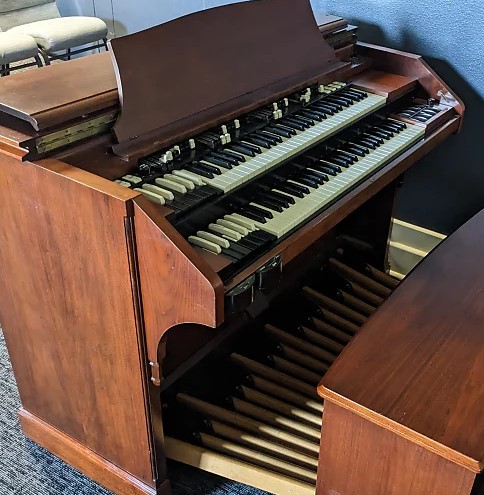 Before Eric Clapton arrived, however, George began leading his bandmates through this fresh new recording of "While My Guitar Genly Weeps." He announces the first take as “Take one!” when this would actually amount to "take 17." He then told Paul: "You, me and Ringo just for the intro chords. Everybody or whoever's left, and Eric, comes in on the other bit." The following 28 takes, numbered 17 through 45, consisted of Ringo on drums (track one), John on guitar (track two), Paul alternating between piano and Hammond RT-3 organ (track three) and George on acoustic guitar and lead vocals with Paul on harmony vocals (track four). When Eric Clapton arrived, he took over John's place on track two with lead guitar. Eric Clapton played with The Beatles on the majority of these takes, leaving four open tracks on the eight-track tape for later overdubs. Before Eric Clapton arrived, however, George began leading his bandmates through this fresh new recording of "While My Guitar Genly Weeps." He announces the first take as “Take one!” when this would actually amount to "take 17." He then told Paul: "You, me and Ringo just for the intro chords. Everybody or whoever's left, and Eric, comes in on the other bit." The following 28 takes, numbered 17 through 45, consisted of Ringo on drums (track one), John on guitar (track two), Paul alternating between piano and Hammond RT-3 organ (track three) and George on acoustic guitar and lead vocals with Paul on harmony vocals (track four). When Eric Clapton arrived, he took over John's place on track two with lead guitar. Eric Clapton played with The Beatles on the majority of these takes, leaving four open tracks on the eight-track tape for later overdubs.
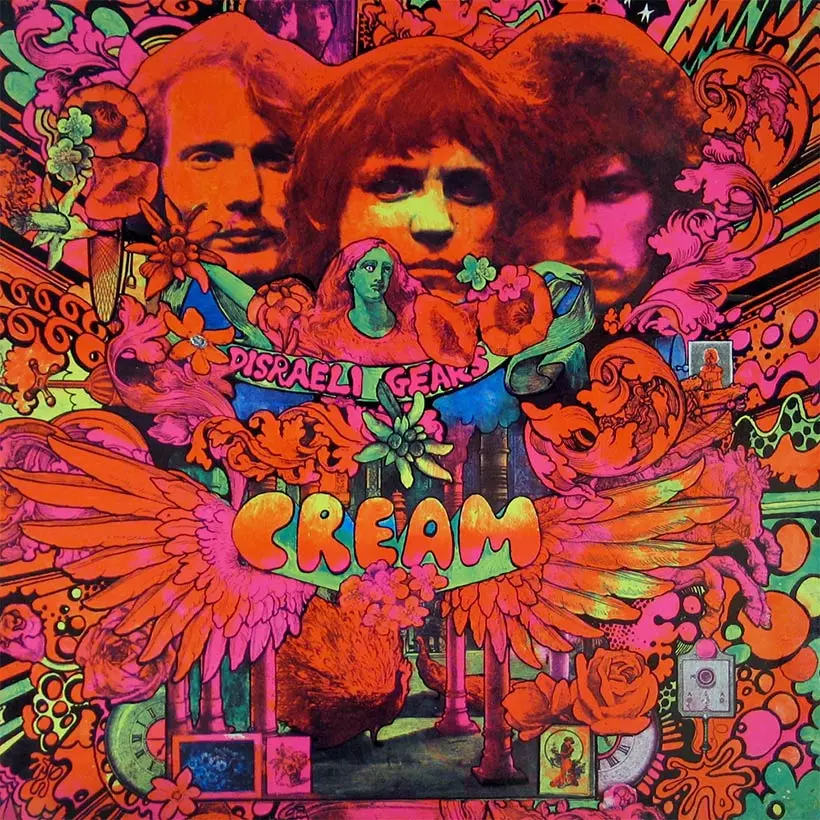 Technical engineer Brian Gibson described Eric Clapton's work in the studio on this day. "Eric (Clapton) behaved just like any session musician; very quiet, just got on and played. That was it...there were no theatrics involved. I remember Eric (Clapton) telling George that Cream's approach to recording would be to rehearse, rehearse, rehearse, spending very little time in the studio itself, whereas The Beatles' approach seemed to be to record, record, record, and then eventually get the right one. The sessions were their rehearsals." Technical engineer Brian Gibson described Eric Clapton's work in the studio on this day. "Eric (Clapton) behaved just like any session musician; very quiet, just got on and played. That was it...there were no theatrics involved. I remember Eric (Clapton) telling George that Cream's approach to recording would be to rehearse, rehearse, rehearse, spending very little time in the studio itself, whereas The Beatles' approach seemed to be to record, record, record, and then eventually get the right one. The sessions were their rehearsals."
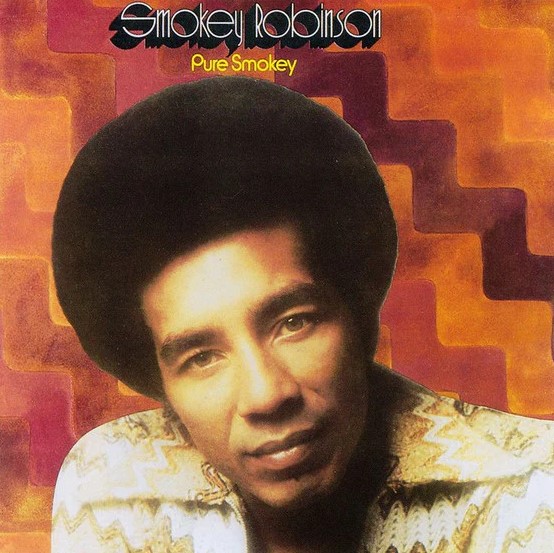 "Take 25" was deemed the best, although "take 27" was included on the Super Deluxe edition of the 'White Album' 50th Anniversary releases. It begins with George's food order, "I'll just have cheese and lettuce and marmite sandwich and coffee," which moves directly into his countdown for this take. During the second bridge, it becomes obvious that this wouldn't be acceptable for the finished version. Just after George tries and fails at something vocally, Eric Clapton plays the wrong chord, which prompts Paul to call out, "Hold it Harry!" After Eric Clapton apologizes for his mistake, George then stated, "It's ok. I sang, eh, tried to do a Smokey and I just aren't Smokey," John stating in the background, "Amen!" George attempted a falsetto melisma that was typical of Smokey Robinson, one of his favorite singers, which he just couldn't master. "Take 25" was deemed the best, although "take 27" was included on the Super Deluxe edition of the 'White Album' 50th Anniversary releases. It begins with George's food order, "I'll just have cheese and lettuce and marmite sandwich and coffee," which moves directly into his countdown for this take. During the second bridge, it becomes obvious that this wouldn't be acceptable for the finished version. Just after George tries and fails at something vocally, Eric Clapton plays the wrong chord, which prompts Paul to call out, "Hold it Harry!" After Eric Clapton apologizes for his mistake, George then stated, "It's ok. I sang, eh, tried to do a Smokey and I just aren't Smokey," John stating in the background, "Amen!" George attempted a falsetto melisma that was typical of Smokey Robinson, one of his favorite singers, which he just couldn't master.
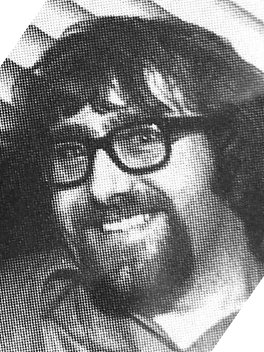 Another interesting footnote concerning this day's activities is "take 40," which broke into an impromptu jam session that included Paul singing parts of both “Lady Madonna” and “While My Guitar Gently Weeps.” The Beatles were having compiled a tape entitled “Beatles Chat” which preserved bits and pieces they thought worthy to keep for posterity, this take of the song being included therein. Also rehearsed between takes was a new McCartney composition entitled "Let It Be," which included Paul substituting the lyric "Mother Mary" with "Mother Malcolm," undoubtedly in reference to Beatles assistant Mal Evans who was present. This impromptu version is interupted by George who instructs engineer Ken Scott, "Ok, roll it, Ken, roll it - Make a note of this one 'cause this is the one." He then prompts his guest guitarist with the words, "Cans on, Eric!" Another interesting footnote concerning this day's activities is "take 40," which broke into an impromptu jam session that included Paul singing parts of both “Lady Madonna” and “While My Guitar Gently Weeps.” The Beatles were having compiled a tape entitled “Beatles Chat” which preserved bits and pieces they thought worthy to keep for posterity, this take of the song being included therein. Also rehearsed between takes was a new McCartney composition entitled "Let It Be," which included Paul substituting the lyric "Mother Mary" with "Mother Malcolm," undoubtedly in reference to Beatles assistant Mal Evans who was present. This impromptu version is interupted by George who instructs engineer Ken Scott, "Ok, roll it, Ken, roll it - Make a note of this one 'cause this is the one." He then prompts his guest guitarist with the words, "Cans on, Eric!"
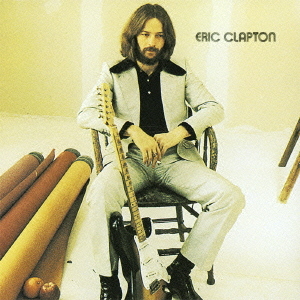 “So Eric (Clapton) played that and I thought it was really good," George remembers. "Then we listened to it back and he said, 'Ah, there's a problem, though; it's not Beatley enough.' So we put it through the ADT (Artificial Double Tracking) to wobble it up a bit.” This wobbling effect at Eric (Clapton)'s request wasn't done until the mixing stage, which was on October 14th, 1968. Nevertheless, by 3:45 am, this monumental recording session by The Beatles and guest guitarist Eric Clapton, which was once again producer-less, was finally complete. “So Eric (Clapton) played that and I thought it was really good," George remembers. "Then we listened to it back and he said, 'Ah, there's a problem, though; it's not Beatley enough.' So we put it through the ADT (Artificial Double Tracking) to wobble it up a bit.” This wobbling effect at Eric (Clapton)'s request wasn't done until the mixing stage, which was on October 14th, 1968. Nevertheless, by 3:45 am, this monumental recording session by The Beatles and guest guitarist Eric Clapton, which was once again producer-less, was finally complete.
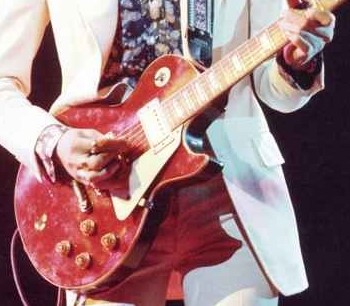 Most listeners assumed it was George playing guitar on the track. George related, "Some people wrote letters to me, saying, 'You have got a really good blues feel in the way that you play that guitar.' We did not publicize Eric's playing really but we also did not try and conceal it. Eric is a good friend of mine and I really dig him as a guitarist and as a guy...We used to hang out such a lot at that period and Eric gave me a fantastic Les Paul Guitar, which is the one he plays on that date. So, it worked out well." This was the classic red 1957 Gibson Les Paul that Eric had named "Lucy." Most listeners assumed it was George playing guitar on the track. George related, "Some people wrote letters to me, saying, 'You have got a really good blues feel in the way that you play that guitar.' We did not publicize Eric's playing really but we also did not try and conceal it. Eric is a good friend of mine and I really dig him as a guitarist and as a guy...We used to hang out such a lot at that period and Eric gave me a fantastic Les Paul Guitar, which is the one he plays on that date. So, it worked out well." This was the classic red 1957 Gibson Les Paul that Eric had named "Lucy."
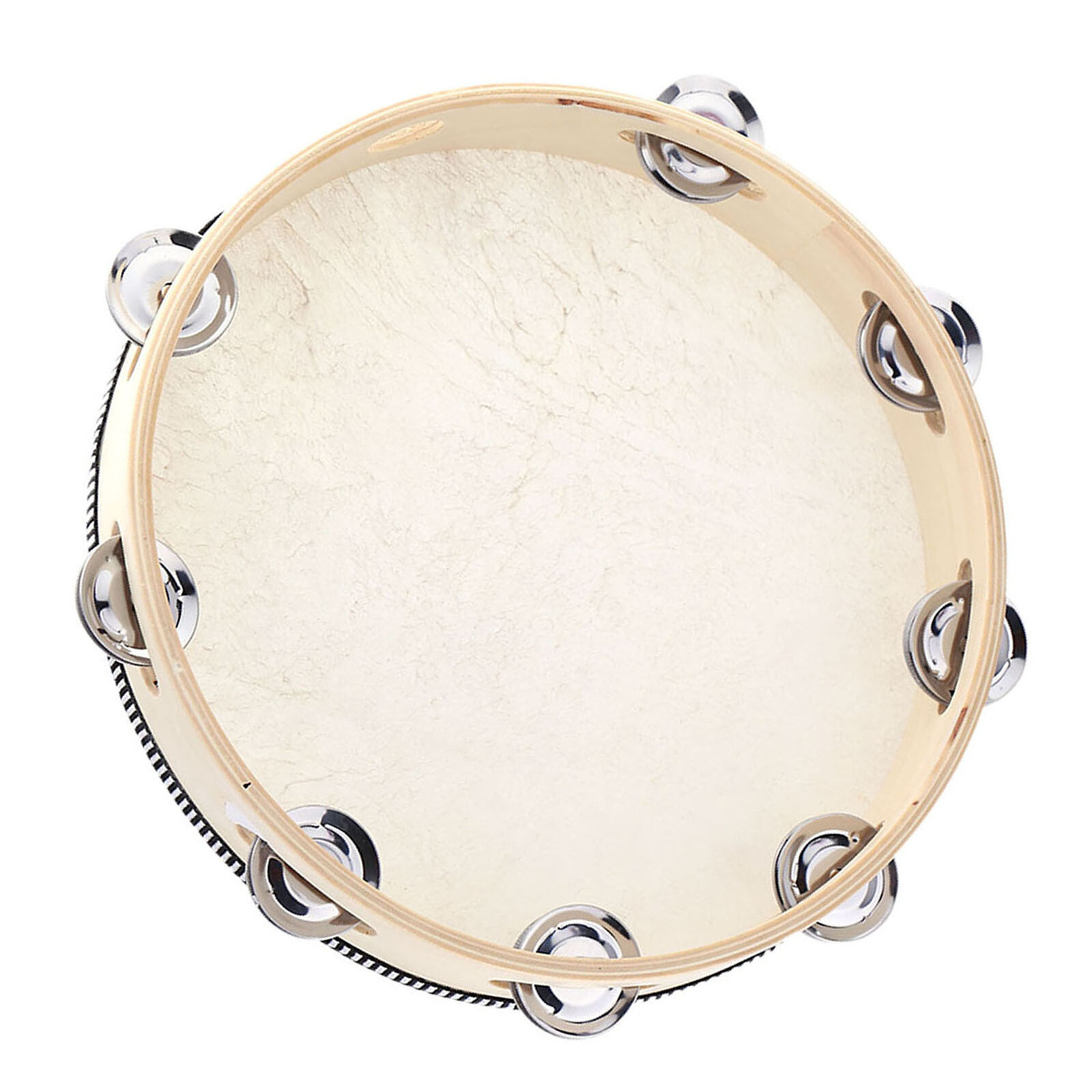 The Beatles returned to add more overdubs onto the song the following day, September 6th, 1968, in EMI Studio Two at approximately 7 pm. This was also a producer-less session, George Martin about to go on vacation and leave young recruit Chris Thomas in charge of production. The remaining tracks of the tape were filled with George double-tracking his vocals as well as playing a few very high pitched organ notes, Ringo on tambourine as well as a stick tapping beat, a lead guitar part played presumably by Paul in the bridges of the song and, surprisingly, John on bass. "Very aggressive sound, isn't it," Paul remarked during his 2021 Hulu series "McCartney 3,2,1," undoubtedly forgetting it was John on bass and not him. "When I hear that tone on it, I say 'Wow,'" he remarked. This overdub session, which ended at around 2 am the following morning, completed the recording of "While My Guitar Gently Weeps." The Beatles returned to add more overdubs onto the song the following day, September 6th, 1968, in EMI Studio Two at approximately 7 pm. This was also a producer-less session, George Martin about to go on vacation and leave young recruit Chris Thomas in charge of production. The remaining tracks of the tape were filled with George double-tracking his vocals as well as playing a few very high pitched organ notes, Ringo on tambourine as well as a stick tapping beat, a lead guitar part played presumably by Paul in the bridges of the song and, surprisingly, John on bass. "Very aggressive sound, isn't it," Paul remarked during his 2021 Hulu series "McCartney 3,2,1," undoubtedly forgetting it was John on bass and not him. "When I hear that tone on it, I say 'Wow,'" he remarked. This overdub session, which ended at around 2 am the following morning, completed the recording of "While My Guitar Gently Weeps."
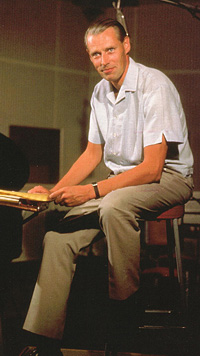 On October 7th, 1968, stereo and mono mixes of the song were created in the control room of EMI Studio Two by the engineering team of George Martin, Ken Scott and Mike Sheady. Neither of these mixes, however, made it to the released album since it was felt they could be improved upon. On October 7th, 1968, stereo and mono mixes of the song were created in the control room of EMI Studio Two by the engineering team of George Martin, Ken Scott and Mike Sheady. Neither of these mixes, however, made it to the released album since it was felt they could be improved upon.
October 14th, 1968, was the day chosen to improve upon these mixes, George Martin, Ken Scott and John Smith in the control room of EMI Studio Two. This is when, upon Eric Clapton's request, ADT was applied to his lead guitar work, as well as the organ, to make it more 'Beatley,' this being done by a quite interesting method. Producer Chris Thomas explains: “I was given the grand job of waggling the oscillator on the 'Gently Weeps' mixes. Apparently Eric insisted to George (Harrison) that he didn't want the guitar solo so typically Clapton...So we did this flanging thing, really wobbling the oscillator in the mix. I did that for hours. What a boring job!”
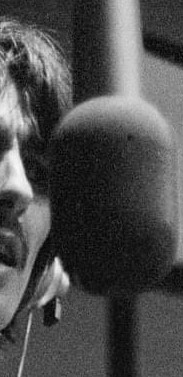 There are some subtle differences between the mono and stereo mixes of the song. The mono mix is a few seconds longer than the stereo and has Eric Clapton's guitar remaining at a higher volume after his solo break. Also, George's calling out of “yeah, yeah, yeah...” during the song's final moments are only heard in the stereo mix. There are some subtle differences between the mono and stereo mixes of the song. The mono mix is a few seconds longer than the stereo and has Eric Clapton's guitar remaining at a higher volume after his solo break. Also, George's calling out of “yeah, yeah, yeah...” during the song's final moments are only heard in the stereo mix.
 Sometime between 2004 and 2006, George Martin and son Giles Martin used the master tapes of “While My Guitar Gently Weeps” for two separate tracks on the splendid compilation album “Love.” First, Eric Clapton's guitar work is heard within the mash-up track “Lady Madonna.” Second, George Martin created a lovely orchestral score to accompany George Harrison's beautiful acoustic rendition of the song he recorded as “take one” back on July 25th, 1968. This was George Martin's final piece of work for The Beatles, 36 years after the group broke up. George Harrison's widow Olivia went on record to say how impressed she was with the producer's string arrangement on this piece. "He was really sympathetic to the music. He really understood what George was trying to say in that song." Sometime between 2004 and 2006, George Martin and son Giles Martin used the master tapes of “While My Guitar Gently Weeps” for two separate tracks on the splendid compilation album “Love.” First, Eric Clapton's guitar work is heard within the mash-up track “Lady Madonna.” Second, George Martin created a lovely orchestral score to accompany George Harrison's beautiful acoustic rendition of the song he recorded as “take one” back on July 25th, 1968. This was George Martin's final piece of work for The Beatles, 36 years after the group broke up. George Harrison's widow Olivia went on record to say how impressed she was with the producer's string arrangement on this piece. "He was really sympathetic to the music. He really understood what George was trying to say in that song."
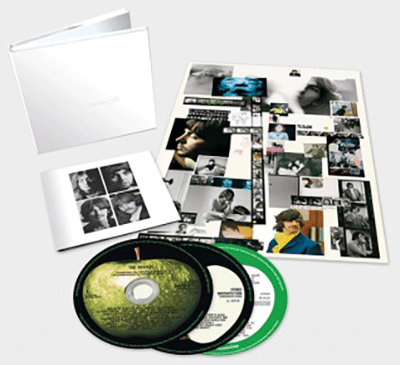 Giles Martin returned to the master tapes sometime in 2018 to create a vibrant new stereo mix of the song for the 50th Anniversary editions of the "White Album." While at it, he also created a stereo mix of the original Esher demo George made in May of 1968, a stereo mix of the newly discovered "take two" recorded on July 25th, and a stereo mix of "take 27" with alternative lead guitar work from Eric Clapton. Giles Martin returned to the master tapes sometime in 2018 to create a vibrant new stereo mix of the song for the 50th Anniversary editions of the "White Album." While at it, he also created a stereo mix of the original Esher demo George made in May of 1968, a stereo mix of the newly discovered "take two" recorded on July 25th, and a stereo mix of "take 27" with alternative lead guitar work from Eric Clapton.
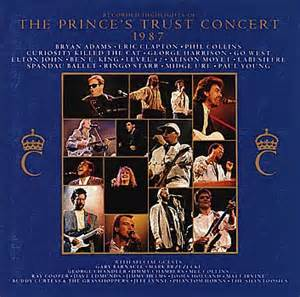 After the Beatles' break-up, George Harrison recorded and released three live versions of the song, the first being recorded on August 1st, 1971 at the afternoon performance of “The Concert For Bangladesh,” which began at 2:30 pm. This performance featured three musicians that played on the original version, namely George, Eric Clapton and Ringo. The second recorded and released version of the song was on June 5th, 1987, at the Prince's Trust Rock Gala in London, featuring George, Eric, Ringo, Elton John, Jeff Lynne and a host of other celebrity musicians, this version being released in various countries (but not in the US) on the album “The Prince's Trust Concert 1987.” The third recorded and released version of the song was performed in December of 1991 during George's short-lived Japanese tour and featured on his album “Live In Japan.” This version featured George and Eric as well. After the Beatles' break-up, George Harrison recorded and released three live versions of the song, the first being recorded on August 1st, 1971 at the afternoon performance of “The Concert For Bangladesh,” which began at 2:30 pm. This performance featured three musicians that played on the original version, namely George, Eric Clapton and Ringo. The second recorded and released version of the song was on June 5th, 1987, at the Prince's Trust Rock Gala in London, featuring George, Eric, Ringo, Elton John, Jeff Lynne and a host of other celebrity musicians, this version being released in various countries (but not in the US) on the album “The Prince's Trust Concert 1987.” The third recorded and released version of the song was performed in December of 1991 during George's short-lived Japanese tour and featured on his album “Live In Japan.” This version featured George and Eric as well.
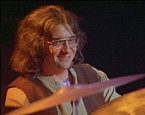 Interestingly, as a tribute to George after his untimely death, a live version of the song was recorded on November 29th, 2002 at the Royal Albert Hall in London during what was called “The Concert For George,” this being released as an album shortly thereafter. The musicians involved on this version include three from the original recording: Paul McCartney on piano, Ringo on drums and Eric Clapton on lead guitar and vocals, with the addition of Jeff Lynne, Dhani Harrison, Jim Keltner and Billy Preston. Interestingly, as a tribute to George after his untimely death, a live version of the song was recorded on November 29th, 2002 at the Royal Albert Hall in London during what was called “The Concert For George,” this being released as an album shortly thereafter. The musicians involved on this version include three from the original recording: Paul McCartney on piano, Ringo on drums and Eric Clapton on lead guitar and vocals, with the addition of Jeff Lynne, Dhani Harrison, Jim Keltner and Billy Preston.
Song Structure and Style
The song's structure is somewhat standard fare, it being 'verse/ bridge/ verse/ verse (solo)/ bridge/ verse' (or abaaba) with an introduction and conclusion thrown in, both of which consist of the same chord pattern heard in the verses.
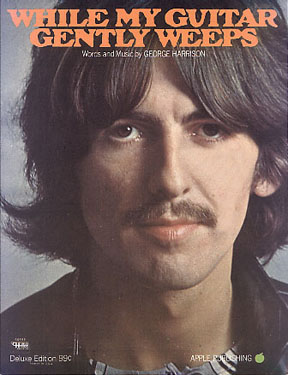 The introduction is eight measures in length, which is equivalent to half the length of each verse. This introduction consists of George on acoustic rhythm guitar, Ringo playing a scaled down drum pattern that alternates two kick drum beats with one hi-hat flare per measure, John playing a single bass note per measure for the first seven measures (adding a little bit more in the eighth measure) and, strikingly, Paul playing a lead piano part without any chords, a single key at a time. The eighth measure adds Eric Clapton's first lead guitar fill as a nice segue into the first verse that follows. The introduction is eight measures in length, which is equivalent to half the length of each verse. This introduction consists of George on acoustic rhythm guitar, Ringo playing a scaled down drum pattern that alternates two kick drum beats with one hi-hat flare per measure, John playing a single bass note per measure for the first seven measures (adding a little bit more in the eighth measure) and, strikingly, Paul playing a lead piano part without any chords, a single key at a time. The eighth measure adds Eric Clapton's first lead guitar fill as a nice segue into the first verse that follows.
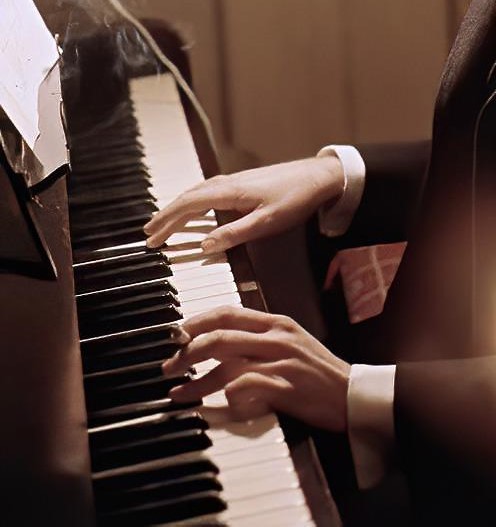 This first verse, which is sixteen measures long, continues with the same instrumentation for the first eight measures, but with some added elements. These include George's double-tracked lead vocals and Eric improvising an electric rhythm guitar pattern throughout, ending with a nice guitar fill in the seventh and eighth measures. Paul plays a full-chord piano part as performed during the rhythm track, although this is quite low in the mix. Ringo chimes in on the eighth measure with his first drum fill in anticipation of his full drum beat pattern as heard in the rest of the verse. This first verse, which is sixteen measures long, continues with the same instrumentation for the first eight measures, but with some added elements. These include George's double-tracked lead vocals and Eric improvising an electric rhythm guitar pattern throughout, ending with a nice guitar fill in the seventh and eighth measures. Paul plays a full-chord piano part as performed during the rhythm track, although this is quite low in the mix. Ringo chimes in on the eighth measure with his first drum fill in anticipation of his full drum beat pattern as heard in the rest of the verse.
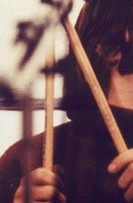 The second half of the first verse changes things up a bit, Ringo adding a stick tapping pattern on top of his drum beat from the rhythm track and Paul adding some nice backing harmonies in the ninth through twelfth measures. John plays dual notes on bass during the thirteenth through sixteenth measures, with Eric adding another tasty guitar lick in the final two measures to go along with Ringo's drum fill. The second half of the first verse changes things up a bit, Ringo adding a stick tapping pattern on top of his drum beat from the rhythm track and Paul adding some nice backing harmonies in the ninth through twelfth measures. John plays dual notes on bass during the thirteenth through sixteenth measures, with Eric adding another tasty guitar lick in the final two measures to go along with Ringo's drum fill.
 The first sixteen-measure bridge arrives next, which consists of George on double-tracked lead vocals, acoustic guitar strumming and high pitched organ playing. John plays an interesting bass part which Paul (presumably) double-tracks with a lead guitar, playing the exact same part while his piano is still heard quietly in the background. Ringo plays his steady drum beat and adds nice drum fills in the eighth and sixteenth measures. Eric meanders around with a nice electric rhythm guitar part while accenting the lyric-less spaces with guitar fills. The first sixteen-measure bridge arrives next, which consists of George on double-tracked lead vocals, acoustic guitar strumming and high pitched organ playing. John plays an interesting bass part which Paul (presumably) double-tracks with a lead guitar, playing the exact same part while his piano is still heard quietly in the background. Ringo plays his steady drum beat and adds nice drum fills in the eighth and sixteenth measures. Eric meanders around with a nice electric rhythm guitar part while accenting the lyric-less spaces with guitar fills.
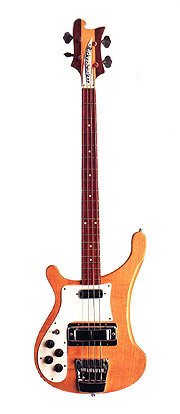 The second verse is next which is quite similar to the instrumentation of the second half of the first verse, meaning it includes Paul's harmony vocals and Ringo's stick tapping pattern. John's bass has now evolved into bass chord-like playing which adds a nice full dirty sound to the song. Eric Clapton's final guitar lick of this verse is actually the beginning of his landmark guitar solo for the solo verse that follows. Other than Eric Clapton's lead guitar, the full instrumentation of this sixteen-measure verse includes acoustic guitar and organ by George, bass and piano by Paul, bass by John, and drums and stick tapping by Ringo, along with Ringo's tambourine which arrives quietly in the tenth measure and increases in volume as the measures progress. The second verse is next which is quite similar to the instrumentation of the second half of the first verse, meaning it includes Paul's harmony vocals and Ringo's stick tapping pattern. John's bass has now evolved into bass chord-like playing which adds a nice full dirty sound to the song. Eric Clapton's final guitar lick of this verse is actually the beginning of his landmark guitar solo for the solo verse that follows. Other than Eric Clapton's lead guitar, the full instrumentation of this sixteen-measure verse includes acoustic guitar and organ by George, bass and piano by Paul, bass by John, and drums and stick tapping by Ringo, along with Ringo's tambourine which arrives quietly in the tenth measure and increases in volume as the measures progress.
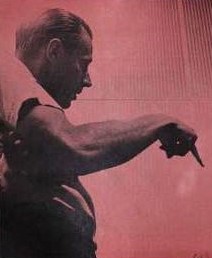 The second bridge is then heard which is similar to the first instrumentally, with the addition of Ringo's tambourine hits which, in the first half, accent the fourth beat of most measures and, in the second half, accent the second beat in most measures. Did he get mixed up? Maybe if George Martin had been there that day this would have been set right. The second bridge is then heard which is similar to the first instrumentally, with the addition of Ringo's tambourine hits which, in the first half, accent the fourth beat of most measures and, in the second half, accent the second beat in most measures. Did he get mixed up? Maybe if George Martin had been there that day this would have been set right.
The final verse is then heard which is mostly similar to the second verse but, since George leaves a gap in the vocals in the tenth through twelfth measures, Ringo's tambourine appears to fill in this gap. Paul then harmonizes with George on the final vocal line of the song, which is “Still my guitar gently wee-eee-eeeps,” the tambourine blazing back as the final word is ringing out.
 This wanders directly into the song's fading conclusion which is approximately the length of two verses, or 32 measures. While Eric Clapton is flailing away with his appropriately melodic closing guitar solo, the rest of the instrumentation is firing on all cylinders to great effect, George double-tracked vocalizing “awe”s and “yeah”s as the song slowly diminishes in volume. Ringo's tambourine keeps disappearing and reappearing throughout these measures as if his arm is getting tired, but this just adds to the highly infectious spontaneous atmosphere of the recording. Also of note is Paul's organ glissando in the eighth measure of this conclusion, adding to the feeling of general camaraderie in the studio on this day. This wanders directly into the song's fading conclusion which is approximately the length of two verses, or 32 measures. While Eric Clapton is flailing away with his appropriately melodic closing guitar solo, the rest of the instrumentation is firing on all cylinders to great effect, George double-tracked vocalizing “awe”s and “yeah”s as the song slowly diminishes in volume. Ringo's tambourine keeps disappearing and reappearing throughout these measures as if his arm is getting tired, but this just adds to the highly infectious spontaneous atmosphere of the recording. Also of note is Paul's organ glissando in the eighth measure of this conclusion, adding to the feeling of general camaraderie in the studio on this day.
The recording shows that The Beatles did stop being “bitchy” in Eric Clapton's presence, putting in some very spirited performances to enliven the track in order for it to meet its potential. It appears that George finally got what he wanted, with everyone giving their all to present the song as they did.
American Releases
The group's double-album "The Beatles," aka the "White Album," was released in the US on November 25th, 1968, "While My Guitar Gently Weeps" being included on side one. As it turned out, the four sides of the album each contained one George Harrison composition, which balanced out quite nicely. The first compact disc release of the album was on August 24th, 1987, the album then being re-released on CD for a 30th Anniversary limited edition release on November 23rd, 1998. A newly remastered CD release was on September 9th, 2009, while the first mono vinyl release of the album in the US was on September 9th, 2014. A vibrant new stereo mix of the album was then released on vinyl on November 9th, 2018.
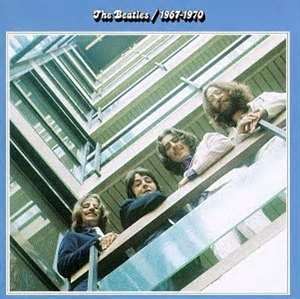 Enough attention was given to the song that, by 1973, it was deemed worthy of inclusion on the official compilation album “The Beatles/1967-1970,” aka the “Blue Album.” This double-album was released on April 2nd, 1973, first making it onto CD on September 20th, 1993, and then as a remastered CD on August 10th, 2010. Enough attention was given to the song that, by 1973, it was deemed worthy of inclusion on the official compilation album “The Beatles/1967-1970,” aka the “Blue Album.” This double-album was released on April 2nd, 1973, first making it onto CD on September 20th, 1993, and then as a remastered CD on August 10th, 2010.
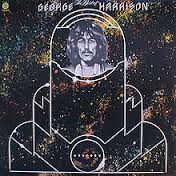 A surprising release of the song was on November 8th, 1976, this being on the album "The Best Of George Harrison." While all of the other Beatles had individual 'greatest hits' packages released around this time, George's was the only one that included Beatles material alongside selections from his solo career. It was certified gold and was released on CD in 1987. A surprising release of the song was on November 8th, 1976, this being on the album "The Best Of George Harrison." While all of the other Beatles had individual 'greatest hits' packages released around this time, George's was the only one that included Beatles material alongside selections from his solo career. It was certified gold and was released on CD in 1987.
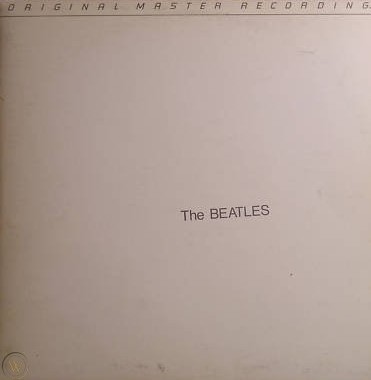 An interesting US vinyl edition of the “White Album” was released on January 7th, 1982, this being manufactured by Mobile Fidelity Sound Lab in Chatsworth, California as part of their "Original Master Recording" series. Their practice was to prepare a new master utilizing half-speed mastering technology from the original master tapes, in this case using the leased sub-master from Capitol Records. This release, which sounded superior to all previous British and American pressings, was packaged in a non-embossed unnumbered cover that did not include the usual poster/lyric sheet or individual Beatles portraits as contained in standard releases. This nonetheless excellent edition of the album was only available for a short time and is quite collectible today. An interesting US vinyl edition of the “White Album” was released on January 7th, 1982, this being manufactured by Mobile Fidelity Sound Lab in Chatsworth, California as part of their "Original Master Recording" series. Their practice was to prepare a new master utilizing half-speed mastering technology from the original master tapes, in this case using the leased sub-master from Capitol Records. This release, which sounded superior to all previous British and American pressings, was packaged in a non-embossed unnumbered cover that did not include the usual poster/lyric sheet or individual Beatles portraits as contained in standard releases. This nonetheless excellent edition of the album was only available for a short time and is quite collectible today.
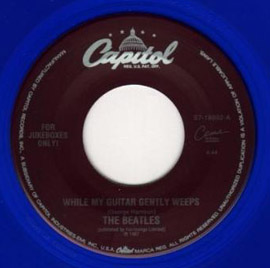 “While My Guitar Gently Weeps” may not have been initially released as a single in the US like it was in many other countries (as the b-side of “Ob-La-Di, Ob-La-Da"), but it did eventually appear as an American single on January 24th, 1996. Part of the Capitol Cema “For Jukeboxes Only” series, with “Blackbird” as the b-side, this single was printed on blue vinyl. Interestingly, the beginning of "While My Guitar Gently Weeps" on this single release has a faded-up intro, not unlike what is heard on "Eight Days A Week." The beginning of the first measure is missing entirely while the song comes to full volume during the fourth measure. It can be assumed that the engineer who prepared this release was making sure he didn't inadvertently include John's "Eh-up!" heard in the closing second of the previous "White Album" track "The Continuing Story Of Bungalow Bill." “While My Guitar Gently Weeps” may not have been initially released as a single in the US like it was in many other countries (as the b-side of “Ob-La-Di, Ob-La-Da"), but it did eventually appear as an American single on January 24th, 1996. Part of the Capitol Cema “For Jukeboxes Only” series, with “Blackbird” as the b-side, this single was printed on blue vinyl. Interestingly, the beginning of "While My Guitar Gently Weeps" on this single release has a faded-up intro, not unlike what is heard on "Eight Days A Week." The beginning of the first measure is missing entirely while the song comes to full volume during the fourth measure. It can be assumed that the engineer who prepared this release was making sure he didn't inadvertently include John's "Eh-up!" heard in the closing second of the previous "White Album" track "The Continuing Story Of Bungalow Bill."
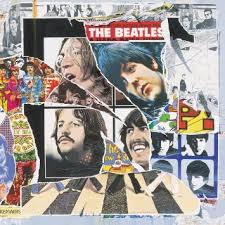 Later that same year, on October 28th, 1996, the compilation album “Anthology 3” was released which included the splendid acoustic version of “While My Guitar Gently Weeps” that was recorded on July 25th, 1968. Also released around this time was the Anthology 3 “CD Sampler” which was distributed to radio stations as a promotional tool for the compilation album. “Gently Weeps” was viewed as enough of a highlight on the general release that it warranted inclusion on the sampler as well. Later that same year, on October 28th, 1996, the compilation album “Anthology 3” was released which included the splendid acoustic version of “While My Guitar Gently Weeps” that was recorded on July 25th, 1968. Also released around this time was the Anthology 3 “CD Sampler” which was distributed to radio stations as a promotional tool for the compilation album. “Gently Weeps” was viewed as enough of a highlight on the general release that it warranted inclusion on the sampler as well.
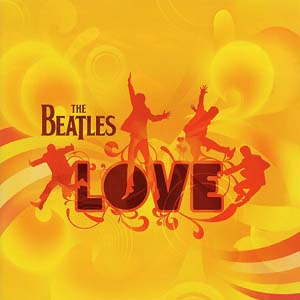 On November 20th, 2006, the song was featured on two different tracks of the Grammy Award winning album “Love.” As mentioned above, Eric Clapton's guitar solo can be heard on the track “Lady Madonna” and, with a new orchestral score from George Martin, the July 25th, 1968 acoustic recording from George Harrison gets the attention it rightfully deserves. It even earned inclusion on the “Love 4 Track Sampler” that was distributed to radio stations around this time. On November 20th, 2006, the song was featured on two different tracks of the Grammy Award winning album “Love.” As mentioned above, Eric Clapton's guitar solo can be heard on the track “Lady Madonna” and, with a new orchestral score from George Martin, the July 25th, 1968 acoustic recording from George Harrison gets the attention it rightfully deserves. It even earned inclusion on the “Love 4 Track Sampler” that was distributed to radio stations around this time.
On September 9th, 2009, the group's entire mono catalog was released in the CD box set “The Beatles In Mono,” which included the rare mono mix of “While My Guitar Gently Weeps” that hadn't been heard on American shores until that time. The vinyl edition of this box set was first released on September 9th, 2014.
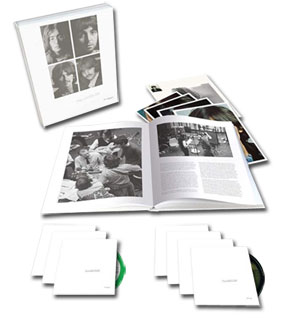 On November 9th, 2018, various editions of the "White Album" were released to commemorate its 50th Anniversary that featured interesting versions of "While My Guitar Gently Weeps." The "Deluxe" edition, which was made available in a 3CD set and a limited edition 180-gram 4LP vinyl set, contains the newly created Giles Martin mix of the "White Album" as well as the complete set of Esher demos that The Beatles recorded in late May of 1968. The "Super Deluxe" 6CD + 1Blu-ray edition also contains the newly discovered "take two" of the song as performed acoustically by George and Paul on July 25th, 1968, as well as "take 27" as recorded on September 6th, 1968 with an alternate Eric Clapton performance. On November 9th, 2018, various editions of the "White Album" were released to commemorate its 50th Anniversary that featured interesting versions of "While My Guitar Gently Weeps." The "Deluxe" edition, which was made available in a 3CD set and a limited edition 180-gram 4LP vinyl set, contains the newly created Giles Martin mix of the "White Album" as well as the complete set of Esher demos that The Beatles recorded in late May of 1968. The "Super Deluxe" 6CD + 1Blu-ray edition also contains the newly discovered "take two" of the song as performed acoustically by George and Paul on July 25th, 1968, as well as "take 27" as recorded on September 6th, 1968 with an alternate Eric Clapton performance.
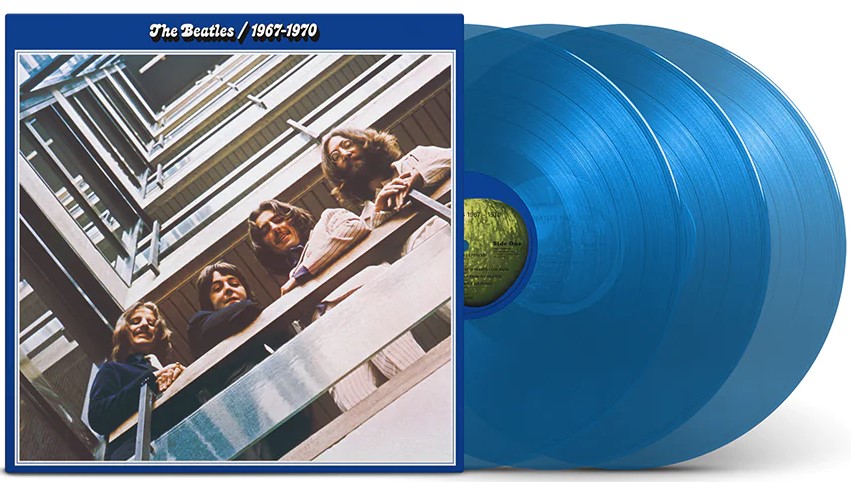 A 50th Anniversay edition of the compilation album "The Beatles / 1967 - 1970" (aka "The Blue Album") was released on November 10th, 2023, the Giles Martin stereo mix of "While My Guitar Gently Weeps" as detailed above, being included. This expanded release included 12 additional songs for a total of 38 tracks, and was made available as a double CD and as a triple vinyl release on both black and blue vinyl. A 50th Anniversay edition of the compilation album "The Beatles / 1967 - 1970" (aka "The Blue Album") was released on November 10th, 2023, the Giles Martin stereo mix of "While My Guitar Gently Weeps" as detailed above, being included. This expanded release included 12 additional songs for a total of 38 tracks, and was made available as a double CD and as a triple vinyl release on both black and blue vinyl.
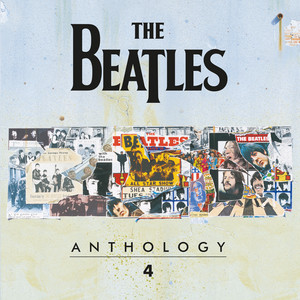 On November 21st, 2025, "Anthology 4" was released on both CD and vinyl, this album also being made available within the "Anthology Collection" box set on CD and on vinyl. "Take 27" of "While My Guitar Gently Weeps" as they recorded at EMI Studio Two on September 5th, 1968, as detailed above, was also included on this new release as it had been in the "White Album" "Super Deluxe" edition. On November 21st, 2025, "Anthology 4" was released on both CD and vinyl, this album also being made available within the "Anthology Collection" box set on CD and on vinyl. "Take 27" of "While My Guitar Gently Weeps" as they recorded at EMI Studio Two on September 5th, 1968, as detailed above, was also included on this new release as it had been in the "White Album" "Super Deluxe" edition.
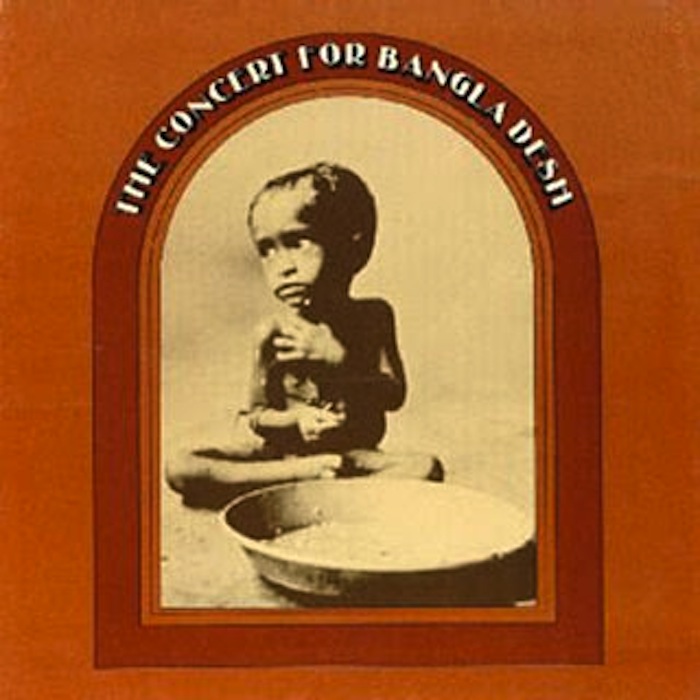 As for solo releases of the song, “The Concert For Bangladesh,” the triple-album live set from “George Harrison And Friends” was released in the US on December 20th, 1971. As mentioned above, the show-stopping live rendition of “Gently Weeps” is included therein, with George, Ringo and Eric Clapton playing their respective parts to a highly appreciative crowd at Madison Square Garden in New York. This album was first released on CD on July 30th, 1991, and then as a remastered set on October 24th, 2005. As for solo releases of the song, “The Concert For Bangladesh,” the triple-album live set from “George Harrison And Friends” was released in the US on December 20th, 1971. As mentioned above, the show-stopping live rendition of “Gently Weeps” is included therein, with George, Ringo and Eric Clapton playing their respective parts to a highly appreciative crowd at Madison Square Garden in New York. This album was first released on CD on July 30th, 1991, and then as a remastered set on October 24th, 2005.
Also, George's album “Live In Japan” was released in America on July 14th, 1992, which included “Gently Weeps” as performed with Eric Clapton. A remastered CD of this album was released sometime in 2004.
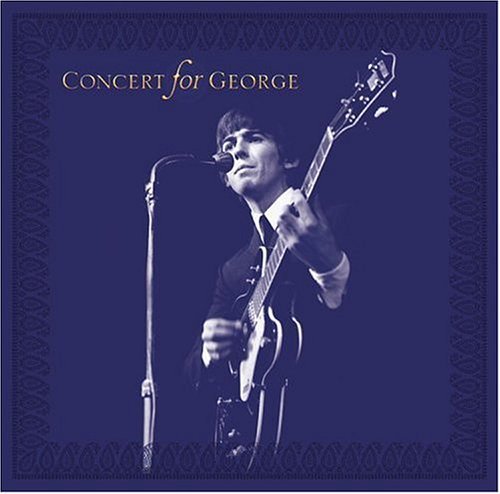 On November 7th, 2003, the tribute album "Concert For George" was released, which contained the stunning all-star performance of music in George Harrison's honor at the Royal Albert Hall in London. As mentioned above, the performance of "While My Guitar Gently Weeps" contained on this release included Paul McCartney, Ringo Starr and Eric Clapton among many other musical luminaries. On November 7th, 2003, the tribute album "Concert For George" was released, which contained the stunning all-star performance of music in George Harrison's honor at the Royal Albert Hall in London. As mentioned above, the performance of "While My Guitar Gently Weeps" contained on this release included Paul McCartney, Ringo Starr and Eric Clapton among many other musical luminaries.
Live Performances
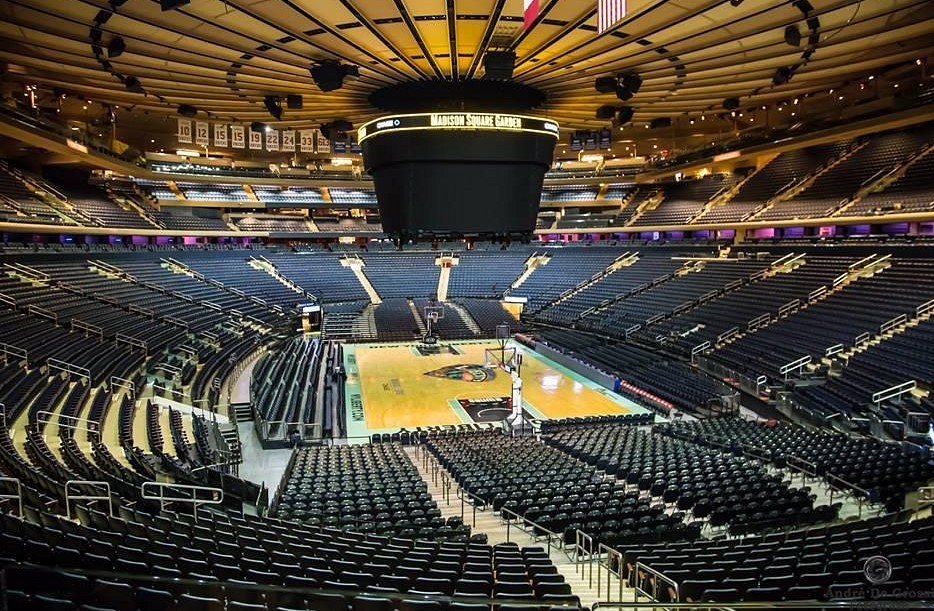 Since "While My Guitar Gently Weeps" had later become such an iconic George Harrison song, it is a given that he would probably perform the song whenever he would take a live stage somewhere. This trend started on August 1st, 1971 with two performances of "The Concert For Bangladesh" at New York's Madison Square Garden. Both benefit shows, at 2:30 and 8 pm respectively, had been organized by George and Ravi Shankar to raise funds and public awareness for refugees from East Pakistan following the Bangladesh Liberation War related genocide. As detailed above, George, Ringo and Eric Clapton, among many others, worked at recreating on stage the Beatles "White Album" classic. Since "While My Guitar Gently Weeps" had later become such an iconic George Harrison song, it is a given that he would probably perform the song whenever he would take a live stage somewhere. This trend started on August 1st, 1971 with two performances of "The Concert For Bangladesh" at New York's Madison Square Garden. Both benefit shows, at 2:30 and 8 pm respectively, had been organized by George and Ravi Shankar to raise funds and public awareness for refugees from East Pakistan following the Bangladesh Liberation War related genocide. As detailed above, George, Ringo and Eric Clapton, among many others, worked at recreating on stage the Beatles "White Album" classic.
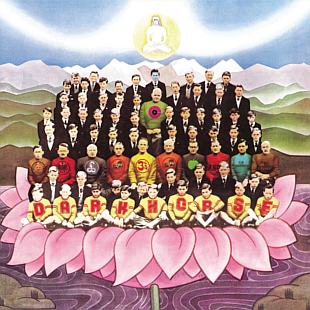 In November of 1974, George began a 45 date tour of North America in promotion of his soon-to-be-released LP “Dark Horse.” The band included Billy Preston, Tom Scott, Andy Newmark and Jim Horn among many others, the two-and-a-half hour show also featuring Ravi Shankar and his friends performing traditional and contemporary Indian music. There were a few Beatles songs performed during this tour, “While My Guitar Gently Weeps” being one of them. In November of 1974, George began a 45 date tour of North America in promotion of his soon-to-be-released LP “Dark Horse.” The band included Billy Preston, Tom Scott, Andy Newmark and Jim Horn among many others, the two-and-a-half hour show also featuring Ravi Shankar and his friends performing traditional and contemporary Indian music. There were a few Beatles songs performed during this tour, “While My Guitar Gently Weeps” being one of them.
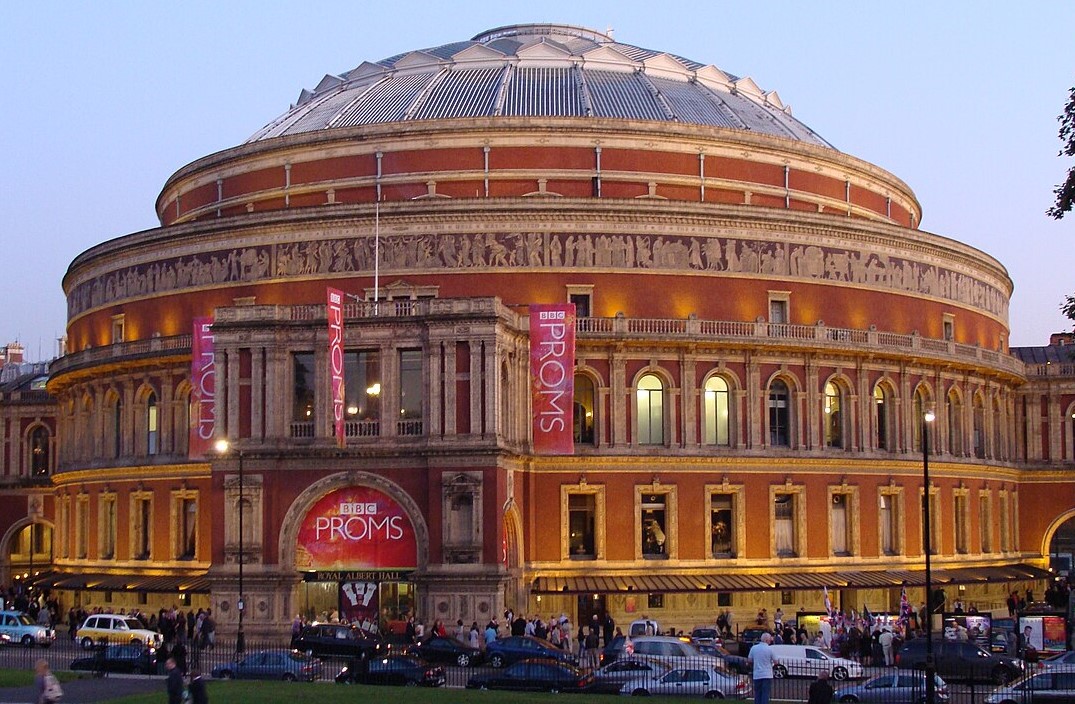 Since this tour got its share of criticism from reviewers and fans alike, George shied away from live performances for quite a long time, only periodically returning to the stage. His appearance at the Prince's Trust Rock Gala in London on June 5, 1987 was a big surprise, his performance of “While My Guitar Gently Weeps” being almost expected but very well received. Harrison's tour of Japan was equally surprising, this stretching from December 1st through 17th, 1991, “Gently Weeps” being part of his extensive set list. Then on April 6th, 1992, George performed a benefit concert at the Royal Albert Hall in London for the Natural Law Party, this version of “Gently Weeps” including Ringo Starr on drums. Since this tour got its share of criticism from reviewers and fans alike, George shied away from live performances for quite a long time, only periodically returning to the stage. His appearance at the Prince's Trust Rock Gala in London on June 5, 1987 was a big surprise, his performance of “While My Guitar Gently Weeps” being almost expected but very well received. Harrison's tour of Japan was equally surprising, this stretching from December 1st through 17th, 1991, “Gently Weeps” being part of his extensive set list. Then on April 6th, 1992, George performed a benefit concert at the Royal Albert Hall in London for the Natural Law Party, this version of “Gently Weeps” including Ringo Starr on drums.
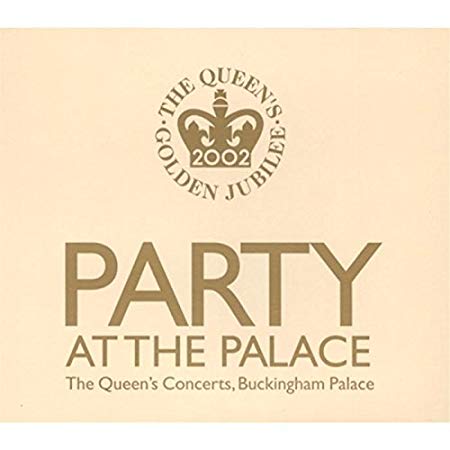 Surprisingly, Paul performed a rendition of the song with Eric Clapton on June 3rd, 2002 in London at the "Party At The Palace" event during the "Golden Jubilee Of Queen Elizabeth II," the Queen herself being in attendance. And, as stated previously, the “Concert For George” also featured the song, performed by a star studded group including Eric Clapton, Paul, Ringo, Billy Preston, Jeff Lynne and others. This breathtaking performance was on November 7th, 2003 at the Royal Albert Hall in London. Surprisingly, Paul performed a rendition of the song with Eric Clapton on June 3rd, 2002 in London at the "Party At The Palace" event during the "Golden Jubilee Of Queen Elizabeth II," the Queen herself being in attendance. And, as stated previously, the “Concert For George” also featured the song, performed by a star studded group including Eric Clapton, Paul, Ringo, Billy Preston, Jeff Lynne and others. This breathtaking performance was on November 7th, 2003 at the Royal Albert Hall in London.
Conclusion
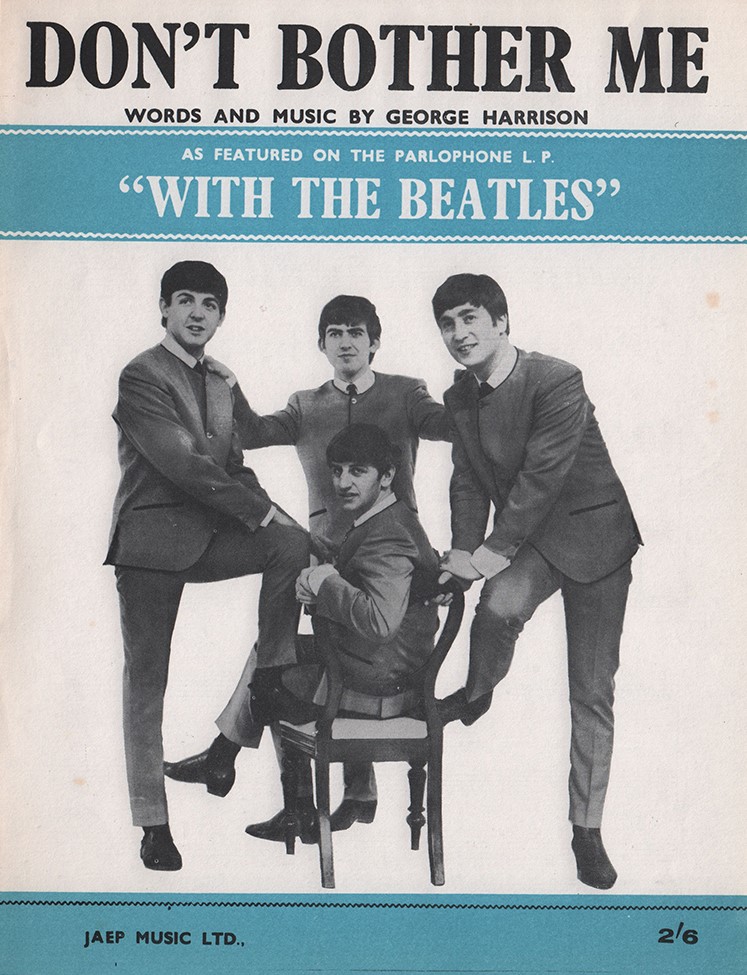 Throughout most of his Beatles career, George Harrison downplayed his compositions for the group, his opinion being that his songwriting skills weren't of the caliber of his bandmates, but felt he could make a go at contributing something perfunctory to hone his skills. He dismissed his early work, such as "Don't Bother Me," "I Need You" and "You Like Me Too Much," rather unfairly, even being overly critical at times. Throughout most of his Beatles career, George Harrison downplayed his compositions for the group, his opinion being that his songwriting skills weren't of the caliber of his bandmates, but felt he could make a go at contributing something perfunctory to hone his skills. He dismissed his early work, such as "Don't Bother Me," "I Need You" and "You Like Me Too Much," rather unfairly, even being overly critical at times.
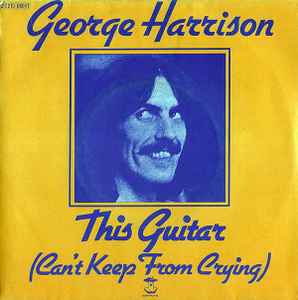 As time went on, however, his enlightened outlook on life, courtesy of studying Eastern spirituality, culture and music, couldn't help but show itself in his later compositions. Later songs such as “Within You Without You” and “The Inner Light” were viewed somewhat higher by their writer, him proud to explain their inspiration in interviews. But when “While My Guitar Gently Weeps” came about, he knew he had something special and worked painstakingly with the other Beatles at getting the recording on par with how he envisioned it. Thereafter, he was proud enough to feature the song on stage whenever the opportunity presented itself. He even reprised the song on his 1975 album “Extra Texture” with a composition entitled “This Guitar (Can't Keep From Crying).” As time went on, however, his enlightened outlook on life, courtesy of studying Eastern spirituality, culture and music, couldn't help but show itself in his later compositions. Later songs such as “Within You Without You” and “The Inner Light” were viewed somewhat higher by their writer, him proud to explain their inspiration in interviews. But when “While My Guitar Gently Weeps” came about, he knew he had something special and worked painstakingly with the other Beatles at getting the recording on par with how he envisioned it. Thereafter, he was proud enough to feature the song on stage whenever the opportunity presented itself. He even reprised the song on his 1975 album “Extra Texture” with a composition entitled “This Guitar (Can't Keep From Crying).”
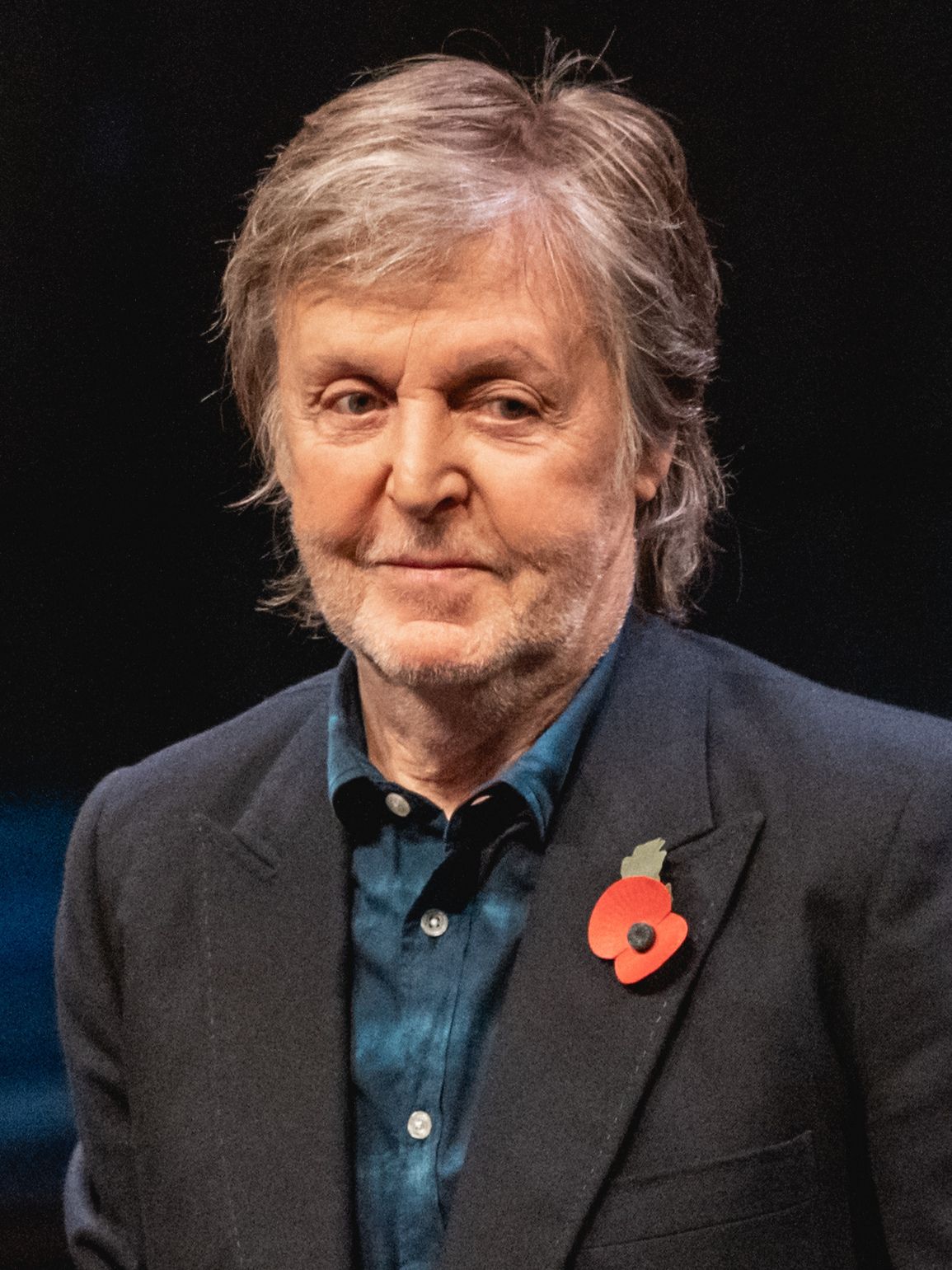 Beatles fans around the world had been impressed with his songwriting skills throughout the early '60s. But as of late 1968, it appears that George finally had written something that actually impressed himself. And indeed it should have. As stated above, even Paul, when discussing "While My Guitar Gently Weeps" during his 2021 Hulu "McCartney 3,2,1" series, had to acknowledge regarding its writer, "He became one of the greats!" Beatles fans around the world had been impressed with his songwriting skills throughout the early '60s. But as of late 1968, it appears that George finally had written something that actually impressed himself. And indeed it should have. As stated above, even Paul, when discussing "While My Guitar Gently Weeps" during his 2021 Hulu "McCartney 3,2,1" series, had to acknowledge regarding its writer, "He became one of the greats!"
Song Summary
“While My Guitar Gently Weeps”
Written by: George Harrison
- Song Written: April - September. 1968
- Song Recorded: September 5 and 6, 1968
- First US Release Date: November 25, 1968
- First US Album Release: Apple #SWBO-101 “The Beatles”
- US Single Release: Capital Cema #S7-18892
- Highest Chart Position: n/a
- British Album Release: Apple #PCS 7067-7068 “The Beatles”
- Length: 4:46 (stereo) 4:49 (mono)
- Key: A minor
- Producer: The Beatles (no producer present for the recording of the released version of the song)
- Engineers: Ken Scott, John Smith
Instrumentation (most likely):
- George Harrison - Lead Vocals, Rhythm Guitar (1968 Gibson J-200), Organ (Hammond RT-3)
- Paul McCartney - Piano (Hamburg Steinway Baby Grand), Organ (Hammond RT-3), Lead Guitar? (1964 Fender Esquire?), harmony vocals
- John Lennon - Bass (1961 Fender VI)
- Ringo Starr - Drums (1964 Ludwig Super Classic Black Oyster Pearl), tambourine, sticks
- Eric Clapton - Lead Guitar (1957 Gibson Les Paul)
Written and compiled by Dave Rybaczewski
|
IF YOU WOULD LIKE TO MAKE A DONATION TO KEEP THIS WEBSITE UP AND RUNNING, PLEASE CLICK BELOW!
Sign Up Below for our MONTHLY BEATLES TRIVIA QUIZ!
|